Dear Friends,
As we made our way along the Turquoise Coast, enjoying the coves and harbours and hikes up into the mountains, it was fascinating and most enjoyable to visit more historic sites, and learn of each place’s unique history through the ruins. First up in this story is Phaselis.
Early morning, anchored in Phaselis Southern Harbour, one of the three harbors of the city
This Lycian* port city was sold to Greek settlers from Rhodes by a local sheptherd in the 7th Century BC. Since money didn’t exist at that time, the city was paid for in dried fish. The abundance of timber, a highly sought after commodity and the fact that it offered safe anchorage regardless of wind direction made Phaselis an ideal site for a city. The canny Phaselians, noted for their skill in trade and commerce invited Alexander the Great to winter here in 333BC, even presenting him with a golden crown in return for his valuable protection. The city became a pirate stronghold before it was absorbed into the Roman province of Lycia-Pamphylia in AD43. Most of the ruins here date from the Roman era, including theatre, baths, an agora and aqueduct and a marble gateway erected in honor of Emperor Hadrian (Hadrian was Roman emperor from 117 to 138AD). The city was abandoned in the 13th Century AD after a series of conquests and destabilizing earthquakes.
*Lycia – will give a little more background about this region/culture in the next story Türkiye #4
Not much left of Hadrian’s Gate, but some of the lintel blocks stacked nearby
But other gateways within the city remain intact
A beautiful arched gateway showing the immense stone blocks so typical of Roman structures.
The inside of one of the rooms of the bathhouses, most likely a calidarium (heated room)
Roman baths were designed for bathing and relaxing and were a common feature of cities throughout the Roman Empire. The often extensive bath houses included a wide diversity of rooms with different temperatures, as well as swimming pools and places to read, relax, and socialise. In the calidarium (as pictured above), the floor was raised on stacks of bricks and the hot air piped in from fires and circulated beneath the floor.
Other walls of the bathhouses showing the holes to secure the marble tiles lining the rooms
Even after centuries, this beautiful arch is testimony to the brilliant building techniques of the Romans
The beautiful middle harbour, now a popular bathing beach for locals and tourists from nearby towns
Part of the viaduct which supplied the city with water, sourced from a spring behind the North Harbour
Another short sail along the coast brought us to Maden Cove and from there we hiked up a rocky path to the eternal fires of Chimaera. Set at an altitude of 300 meters are two outcrops of volcanic rock where escaping natural gas is permanently alight. The flames is known as ‘Yanartas’ (burning stone). In ancient times, the fire was guided upwards to light a beacon to warn ships of impending danger.
Many small bursts of fire from the rocky outcrops
Nothing quite so mesmerizing as flames which have been burning for thousands of years
According to legend, (mentioned in Book 6 of Homer’s Iliad), Chimaera was a fire-breathing female monster with a lion’s head, a goat’s body and the tail of a serpent. Bellerophon a handsome Lycian hero flying on his winged horse, Pegasus, slew Chimaera with his arrows and buried the monster with boulders he hurled from above. The flames bursting from the ground still to this day, mark the spot where the monster fell.
The ruins of a Byzantine church at the base of the Chimaera, probably once a temple of Vulcan
Looking back down the trail, the temple on the left and the ultra-blue Mediterranean Sea beyond
A little further along the coast, and after a long hike on a pebbly beach, we followed a narrow path along a dry river bed to ruined city of Olympos, now buried in a forest of bay laurel trees with a number of fresh-water springs gushing up along the way. At this site it is possible to to find a monumental gateway, an aqueduct, baths, tombs and a mosaic-clad church complex. Once a thriving port, the beach and river was long ago silted up which was probably the reason for the demise of the city.
Today, the beach front boasts a vibrant ‘hippy scene’ and the inevitable dreadlocked percussionist.
One of the beautifully stone-carved tombs, as usual showing the ‘break-in’ by ancient trophy hunters
Looking through several arched gateways as we meandered among the ruins
A beautifully preserved bath with a mosaic floor within the church complex
Close to the beach, along the riverbed are the ruins of a storage building of the once thriving port city
This cute little toddler was more interested in climbing on the stone blocks than in viewing the ruins
Sometimes, after a busy day, we cruised to a new anchorage for the night and continued our sea journey along the coast early the following day. It was always a nice break to be sailing through the morning and be able to chat, do some chores, relax and enjoy the sun and wind in our faces.
Overnight anchorage in Porto Genovese with Mt Olympos in the background
Jessie enjoying a quiet moment
A pigeon joined us on board and enjoyed his bread and water rations
Laundry hung up to dry in the stern competes for the breeze with the Turkish flag
Chatting with Roger about this and that
Jeanne and Roger relaxing in the deckchairs on the foredeck before our next excursion
After arriving in the harbour of the small town, Finike, and another delicious lunch prepared by Chef Ahmet, we were driven for nearly an hour up into the mountains, stopping on the way to marvel at some stone tombs high above us.
A close up of the tombs – more about the Lycian tombs in the next episode #4
But before we began our hike up to the superb ruins of Arycanda, we enjoyed visiting a local market and tasting some corn, and fruits and the delicious honey of the region.
Anyone for roasted corncobs?
A slightly bemused smile from one of the traders when I asked if I could take her photo
Or some fruit?
Or some pomegranate
A mega jar of olives perhaps?
Offering us some honey straight from the honeycomb
The city of Arycanda is built on a series of five grand terraces at between 700-900 meters above sea level with magnificent views down to the sea and towards the surrounding mountains. Excavations have so far revealed an agora, theatre, stadium, baths and gymnasium. Among the earliest finds are stone hammers dating back to 2000BC. The city was at its most prosperous in the Roman period. Its wealth is thought to have come from passing trade and timber from the nearby forests. It had no city walls to defend it, only a single watchtower at the highest point of the town being a potentially defensive feature. It was severely damaged by an earthquake in the 3rd century AD after which it was partially abandoned, although parts survived and prospered. Early Christian basilicas were built through the Byzantine era of the 6th century AD
Rays of sunlight across the valley below highlight some of the ancient walls.
At the highest level is the stadion with 3 rows of seating and behind 8 niches thought to have been a temple
The Parliament building dwarfed by the massive cliffs behind
A view of the Necropolis area
A beautiful carved lion stacked with other blocks in a corner of the ruins
The stunning theatre with a view down the valley and remnants of the stage evident also
What better place for our trusty guide Yunus to produce a bottle of the local wine which
we sipped sitting on the stone benches and learning a little more about this site.
Looking our through the windows of one of the 9 huge bathhouses
The baths were serious business, more beautiful views through windows of another bath house
Evidence of Christianity – this earliest symbol signifying a ‘meeting place’ for early Christian worshippers
At least 4 late rich Roman houses have been found in the ancient city whose owners were privileged people. In 2017 an prestigious Roman house overlooking the city with eight large rooms and dating from the 5th Century AD was discovered which was destroyed by a fire in 435. It includes a private bath and also a commercial public bath open to paying customers. There was also a pool in the courtyard with a view. The name of the owner, Pierus, was found on a floor mosaic.
One of the peristyle houses showing an open courtyard surrounded by rooms
A mosaic from the floor of one of the houses
With thoughts of life in Arycanda winging through our minds, we descended back to the beginning of the track and were treated to a delicious meal at the home of the key security guard of the site. His wife lavished us with a home cooked meal – stuffed vine leaves, meat stew, stuffed peppers, salad, yogurt and flatbread and a huge glass of pomegranate juice, delicious but potent enough to bring tears to your eyes. She has had plenty of practice cooking for all the archaeologists who work at the site.
Yunus explaining the dishes and serving our dinner, acting as translator of our thanks to our hosts
And as they say, ‘tired but happy’ we were driven back to our gulet lodgings, safely moored in the harbour of Finike. Just a moment to enjoy the lights of the harbour before retiring for the night.
The marina at Finike
So there you have the story of a couple more full-on days as you follow me along the Turquoise Coast. Please let me know if I have made any glaring historical or geographical errors, this would be appreciated.
Until soon.
All good wishes to you my friends and readers.
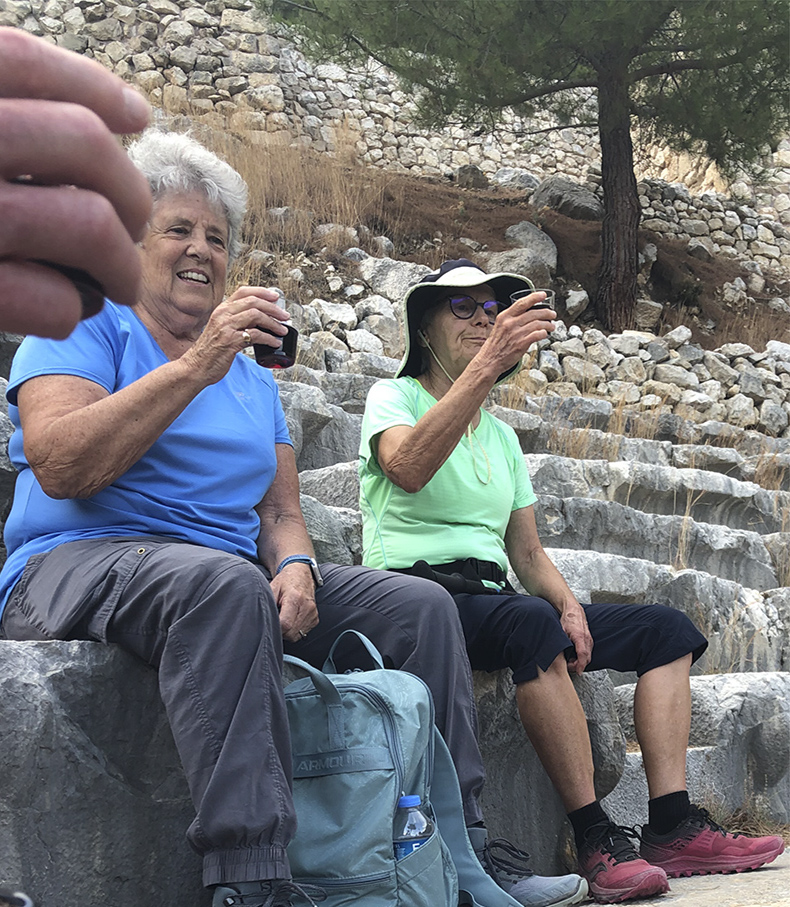
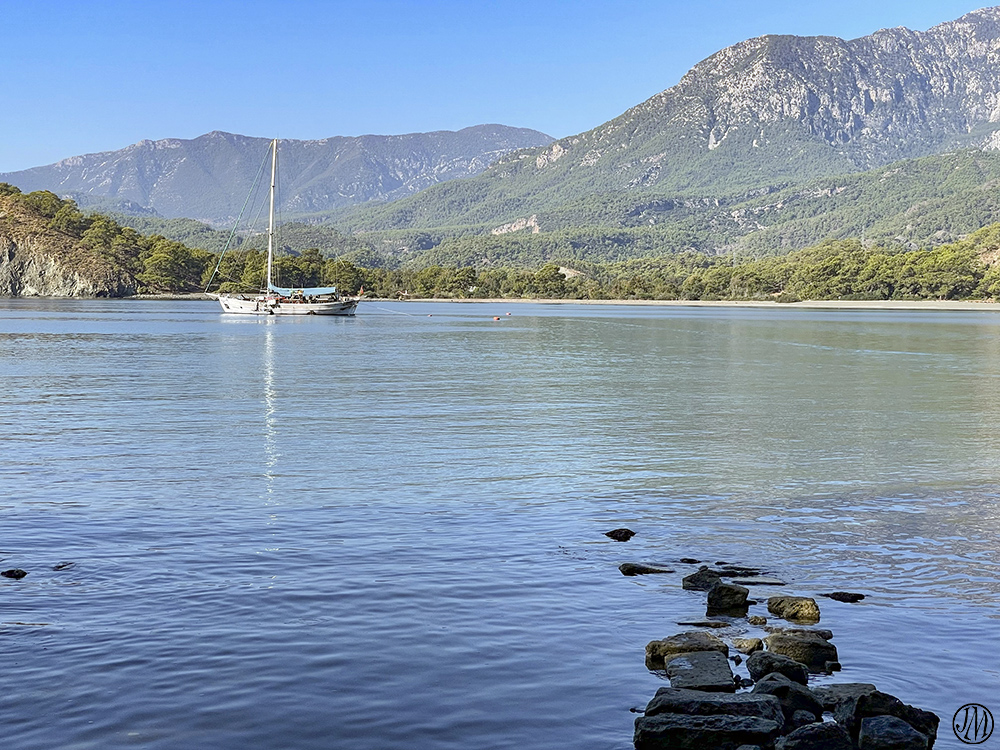
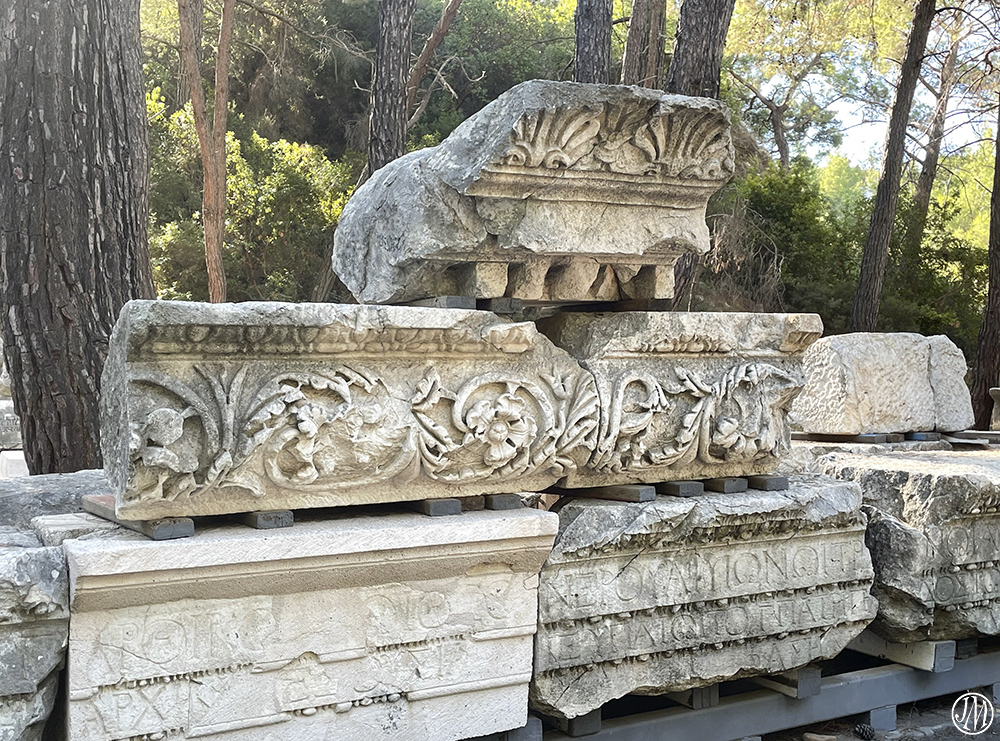
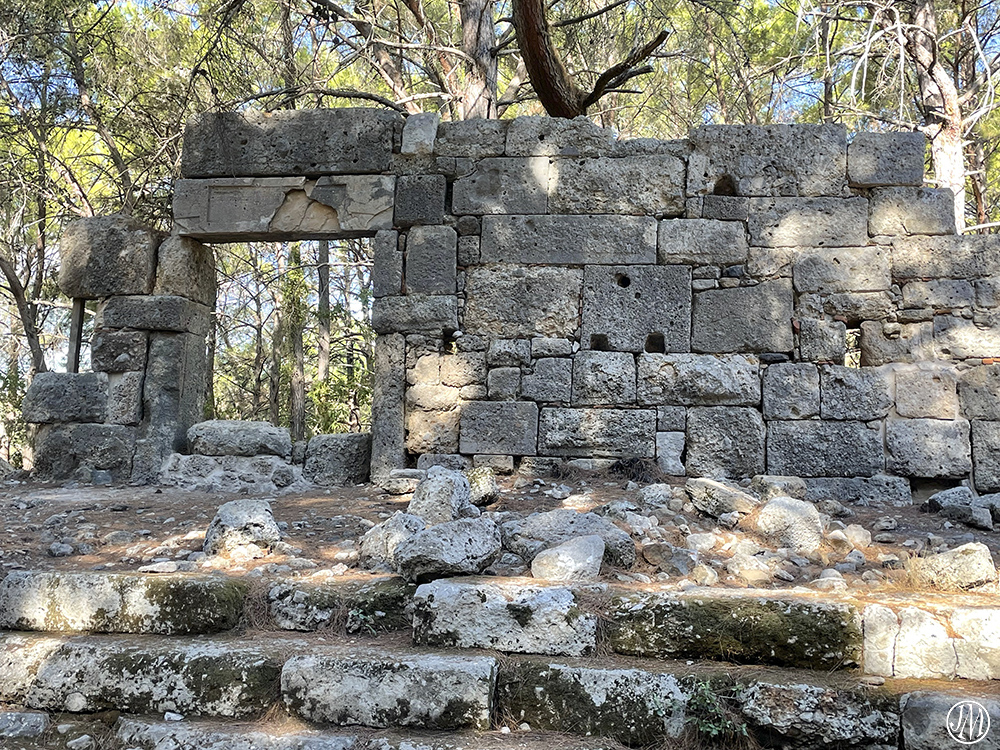
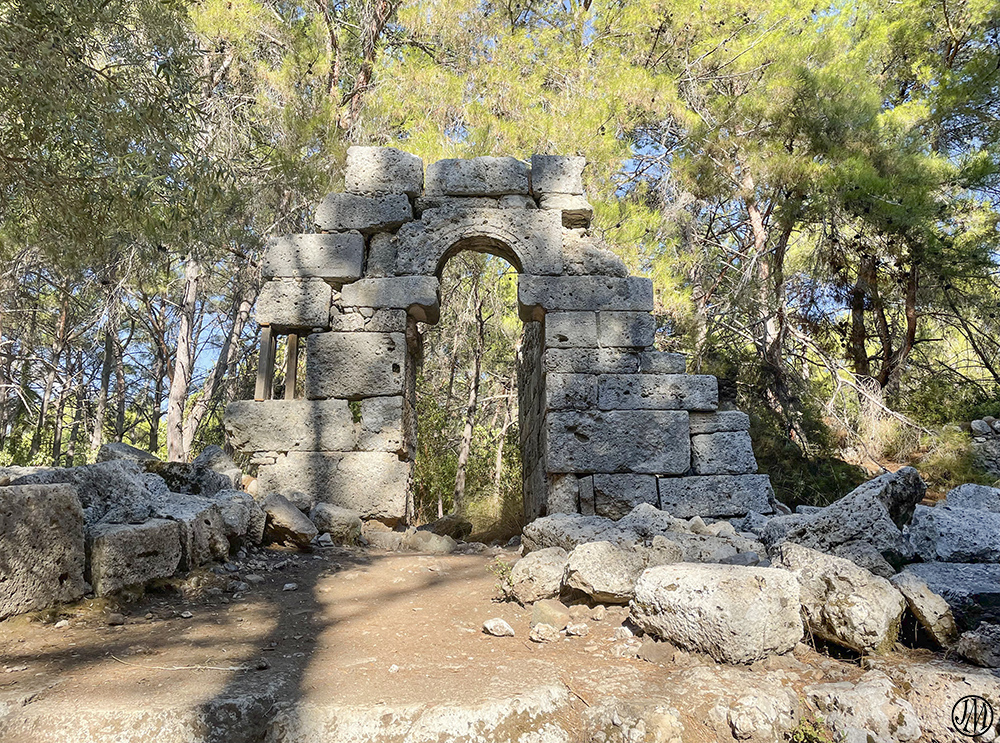
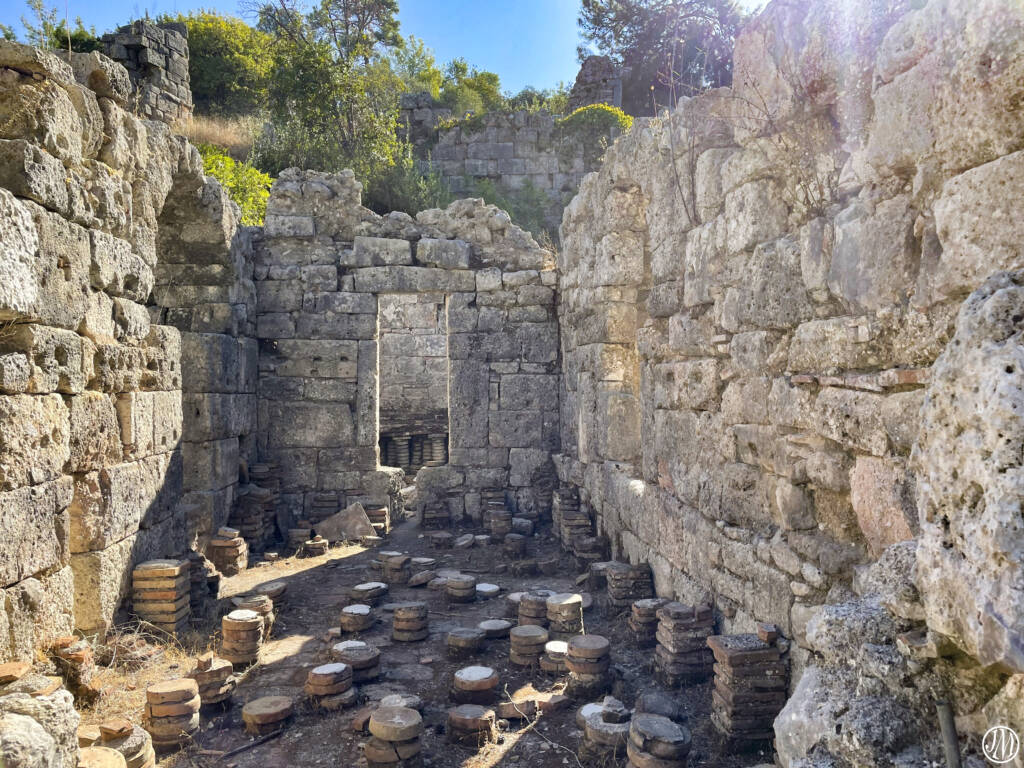
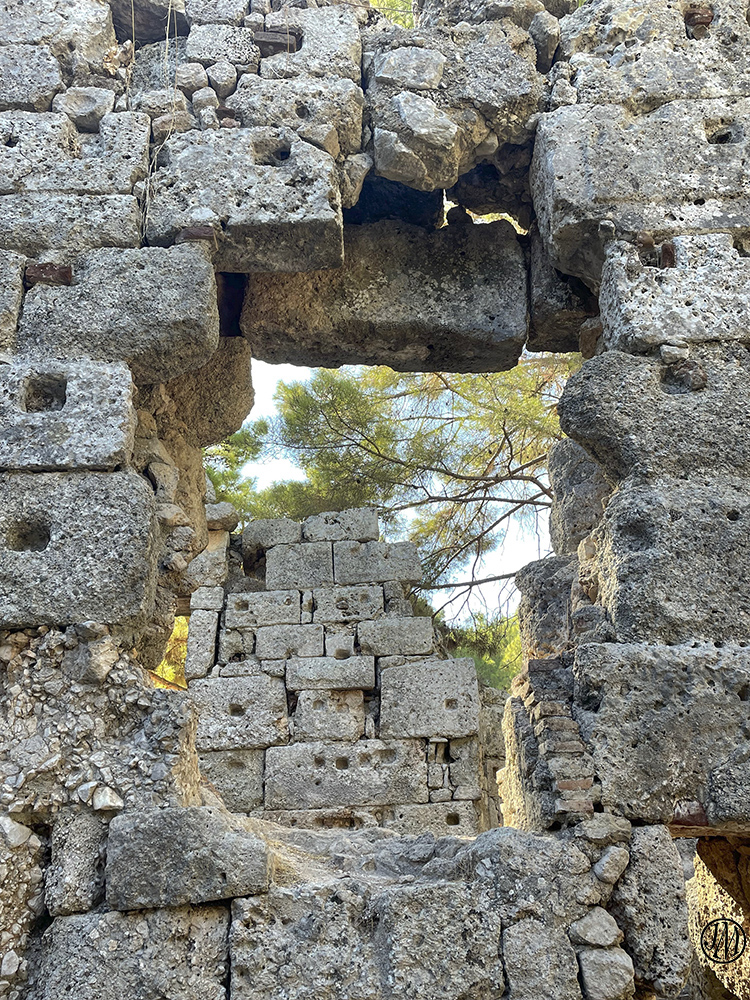
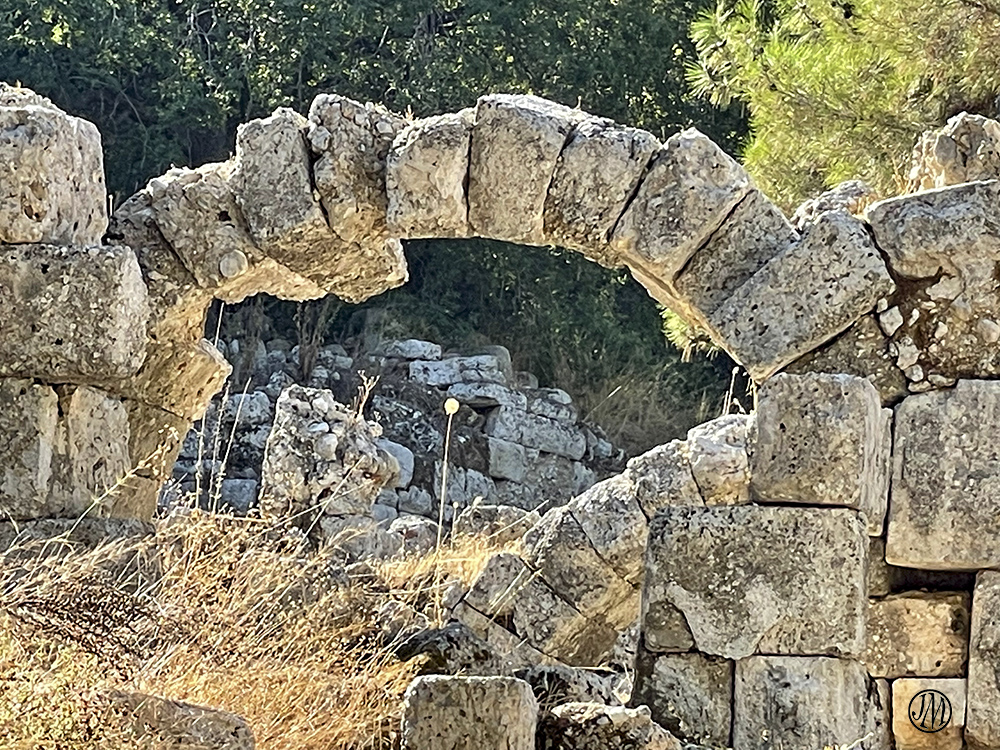
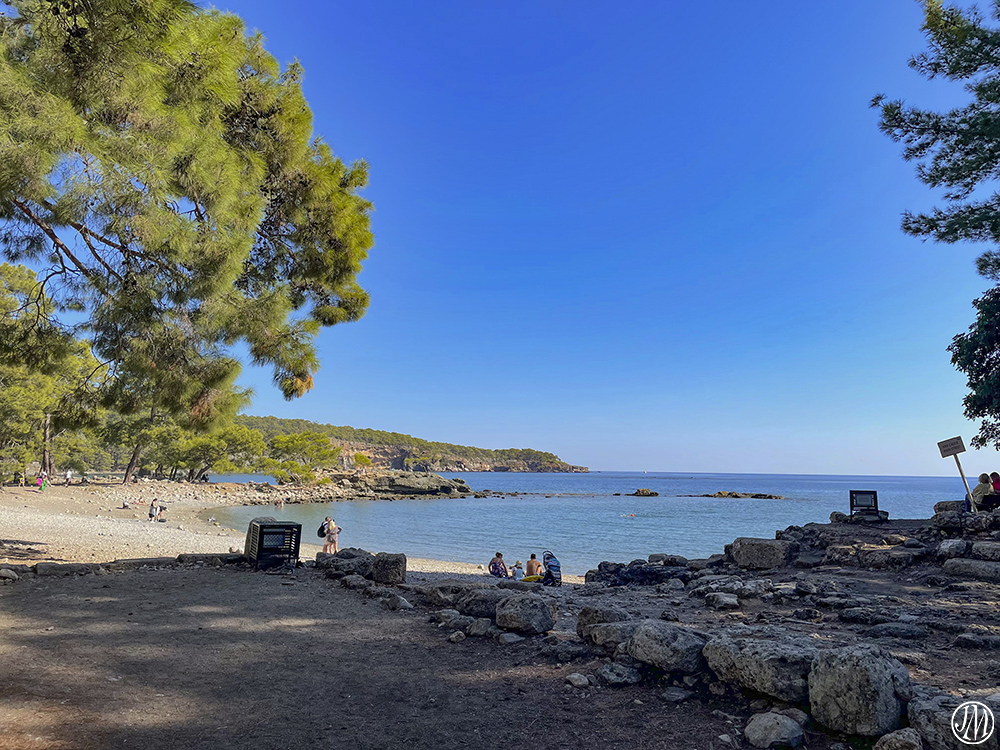
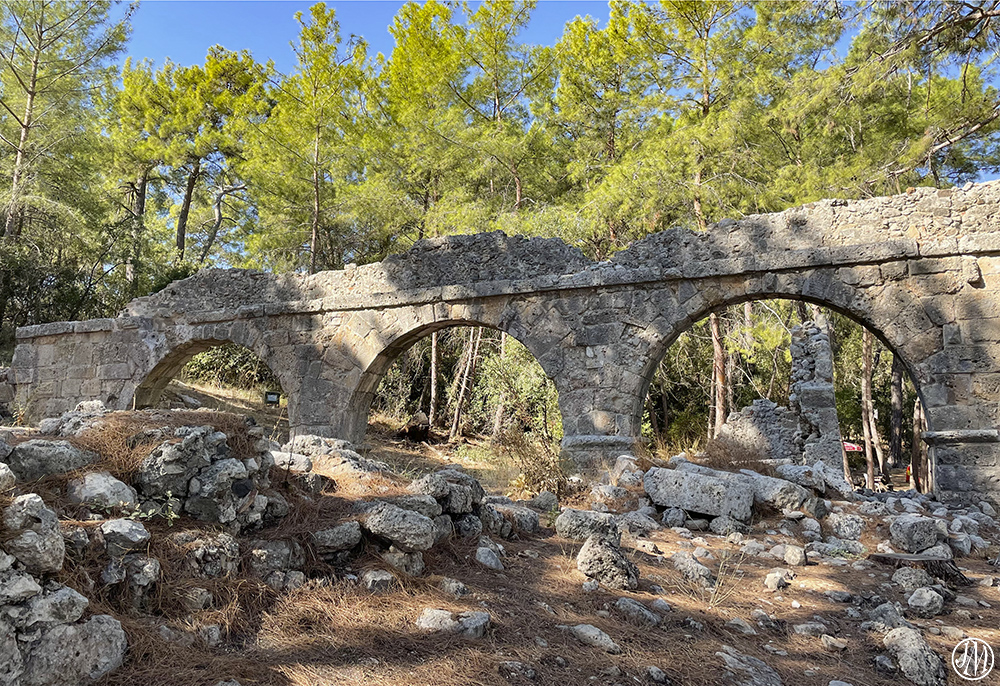
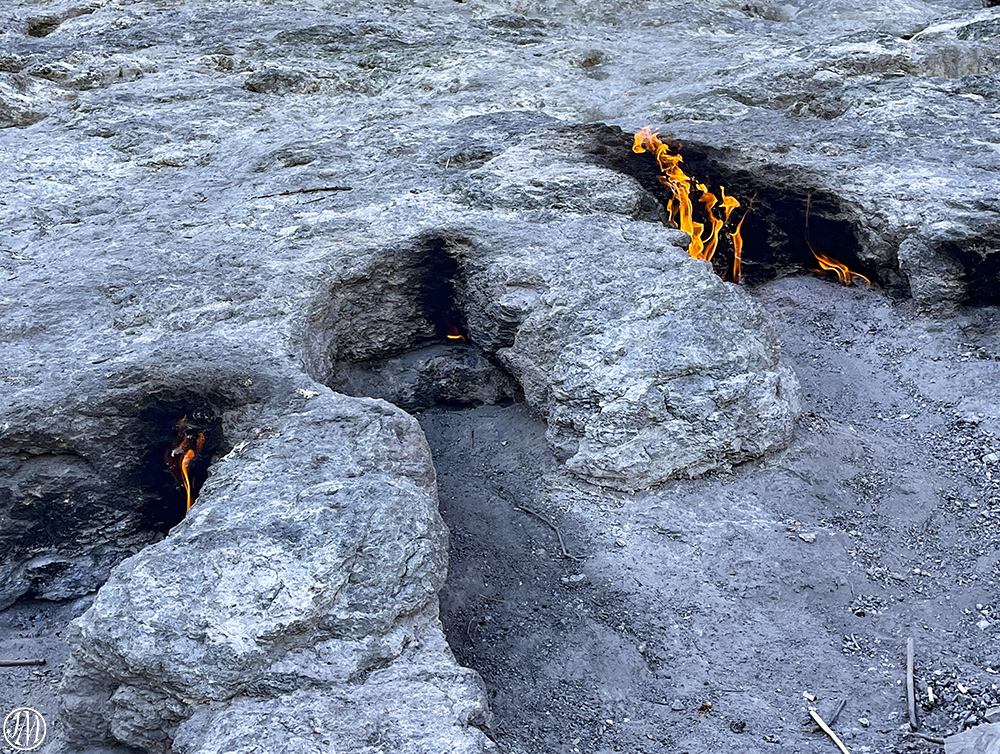
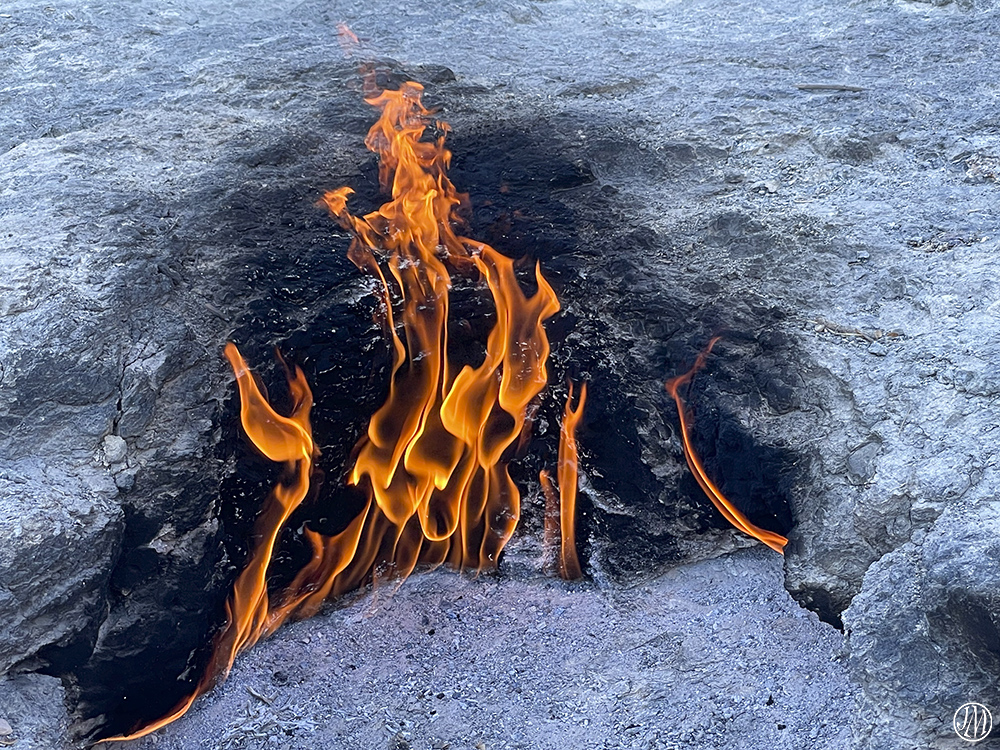
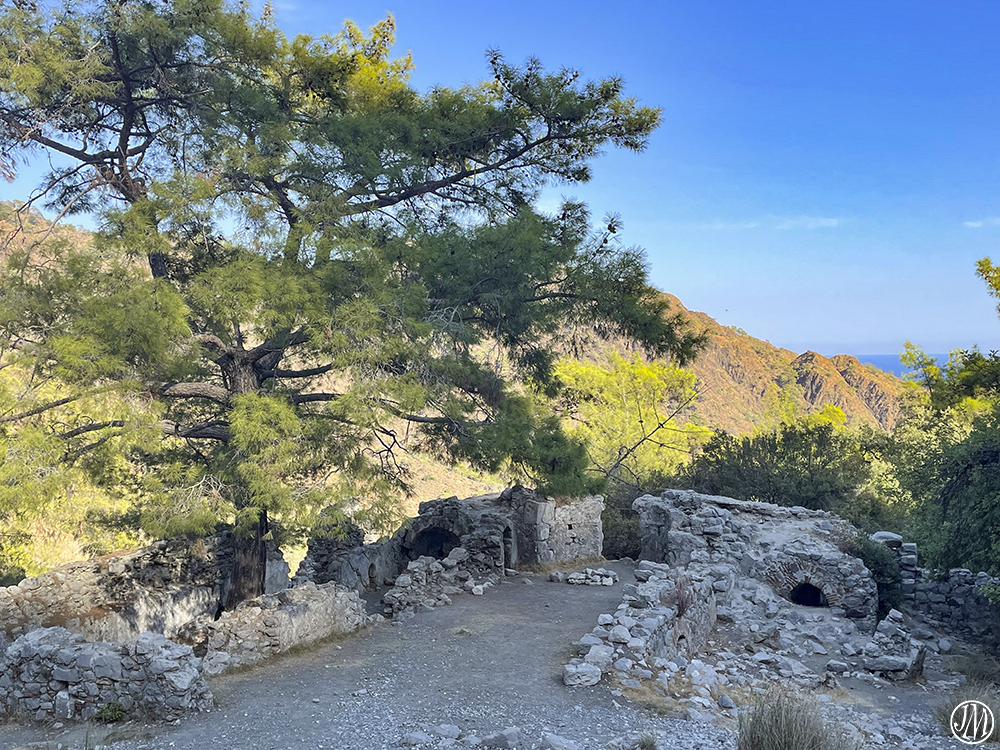
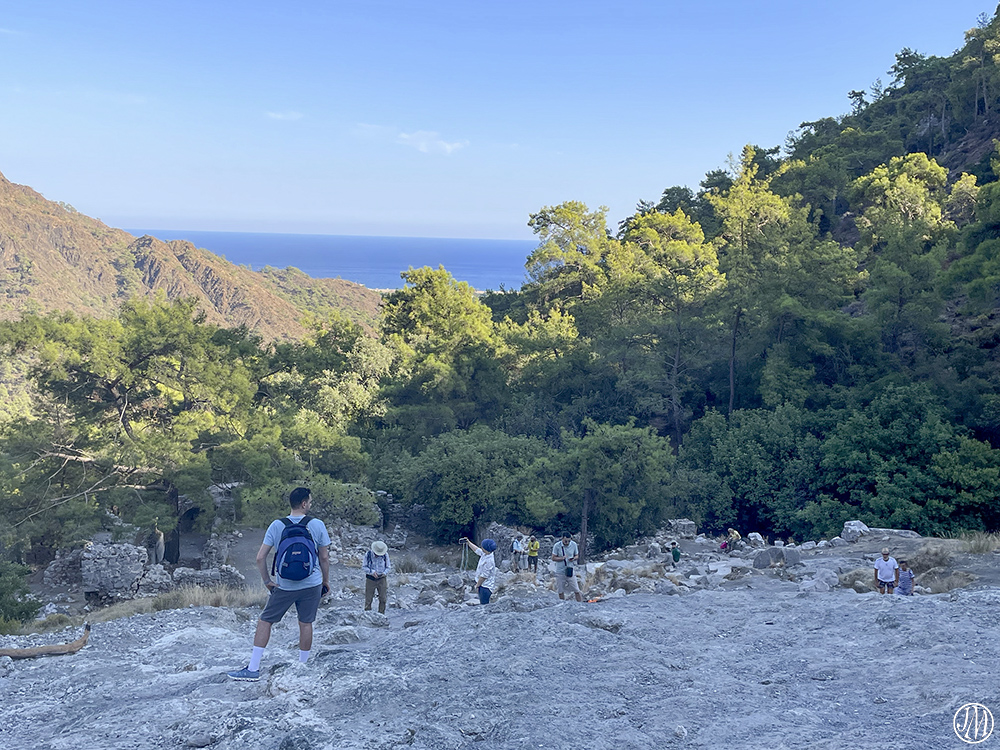
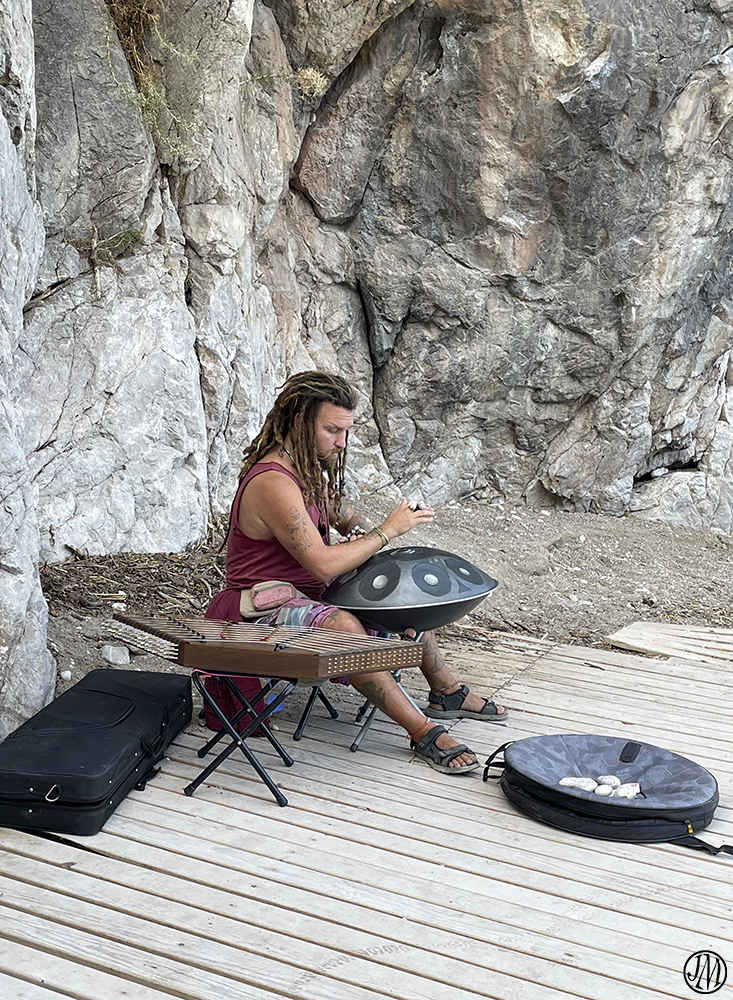
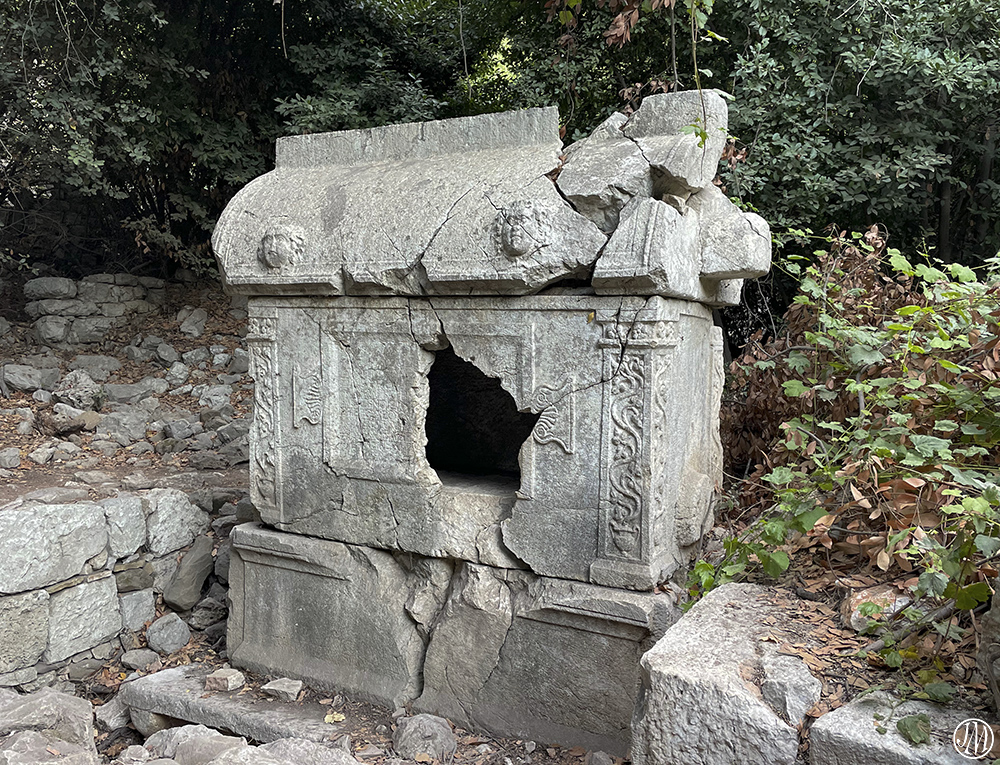
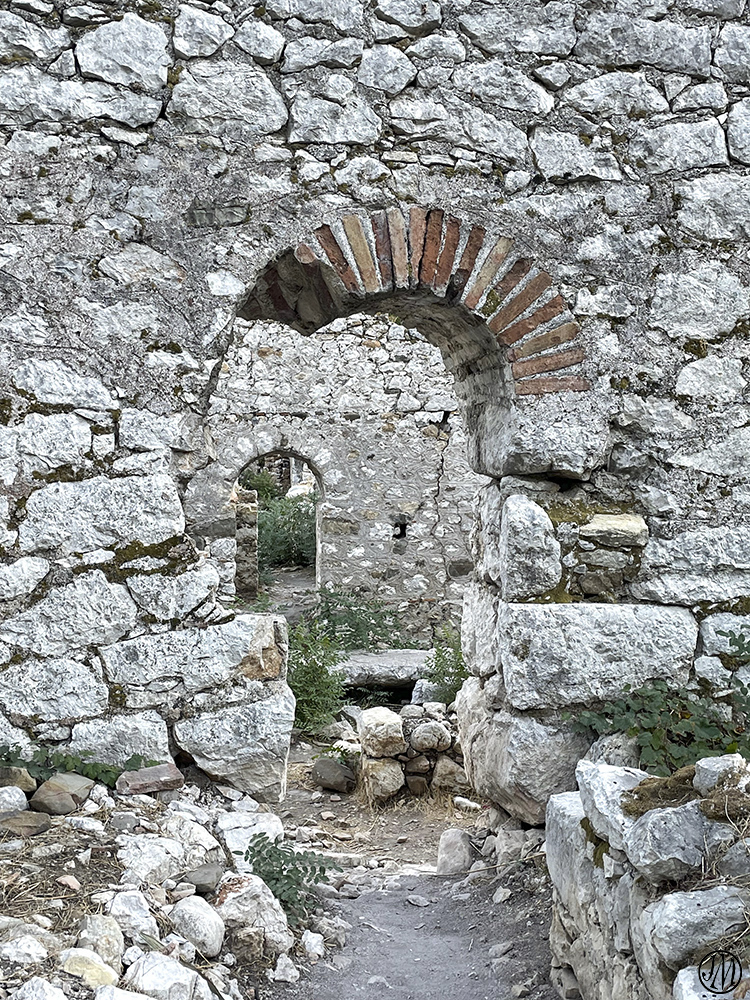
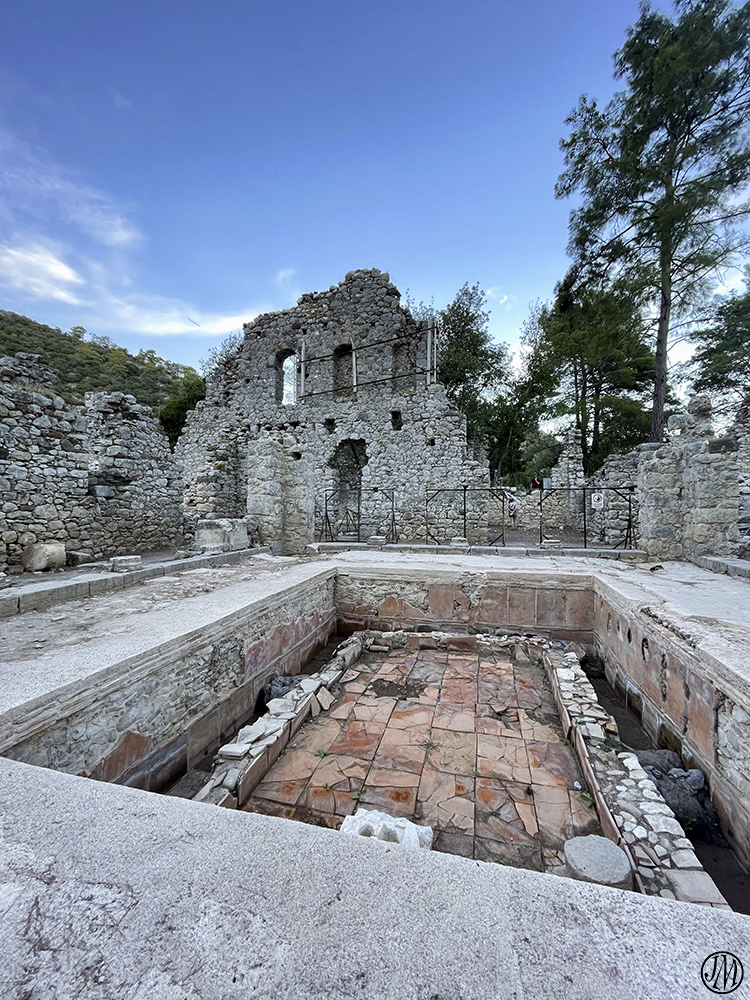
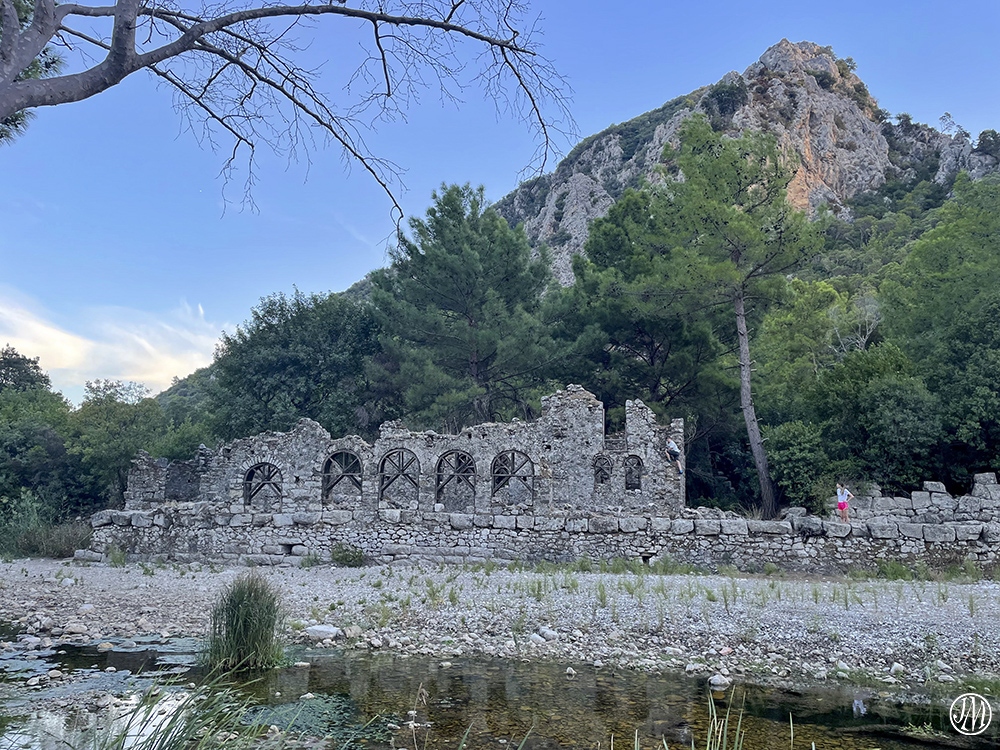
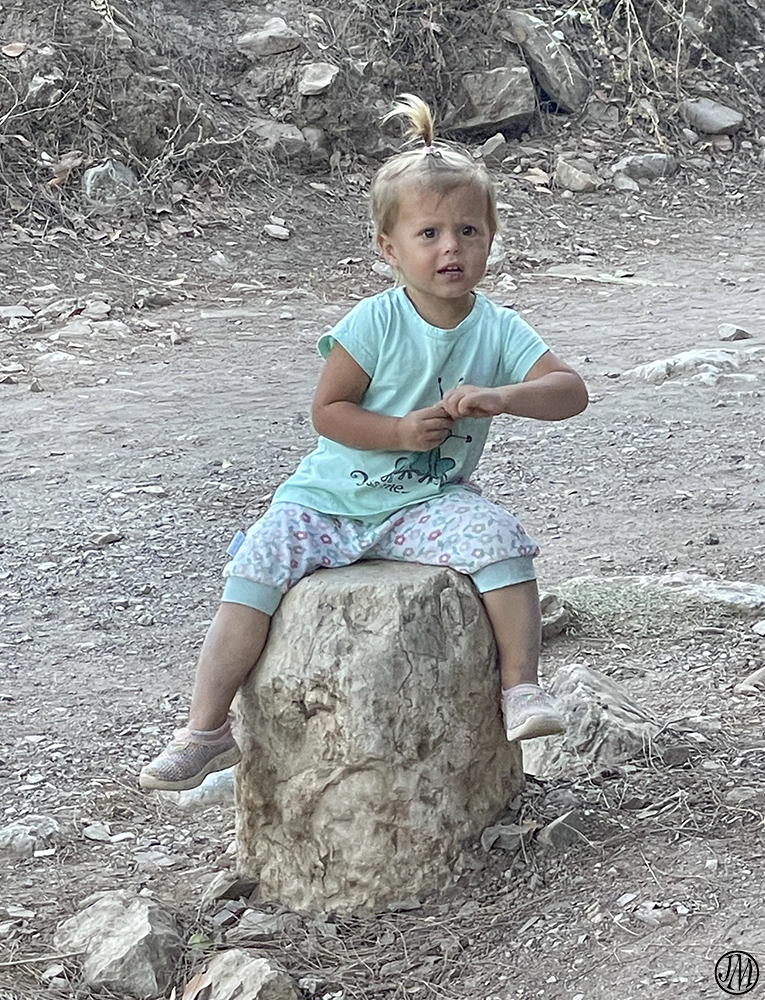
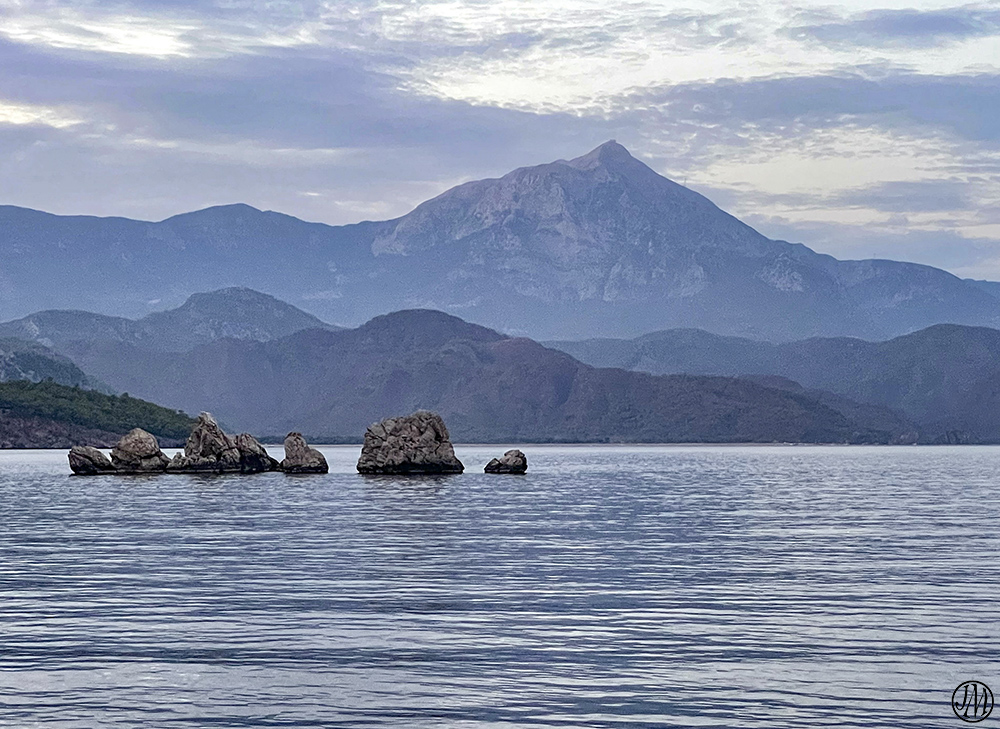
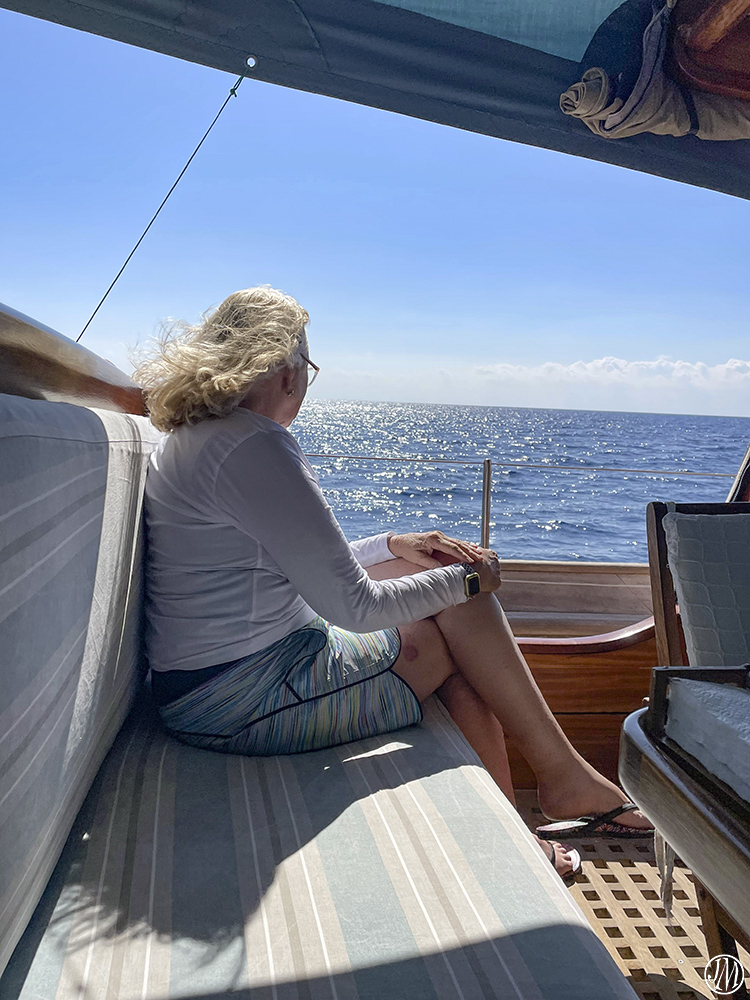
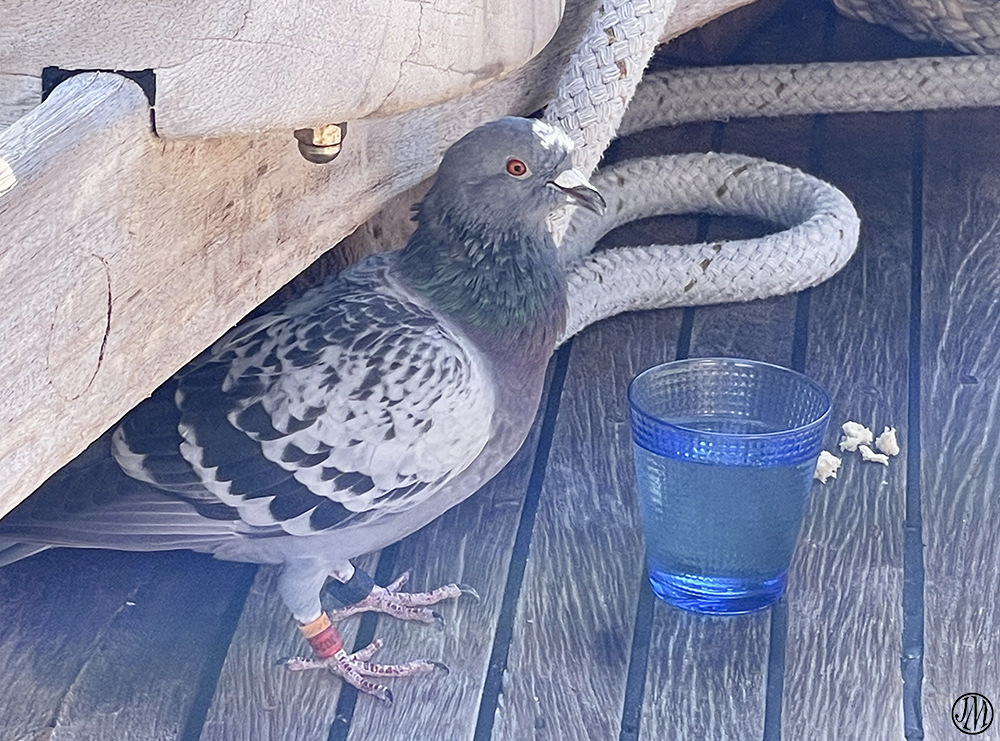
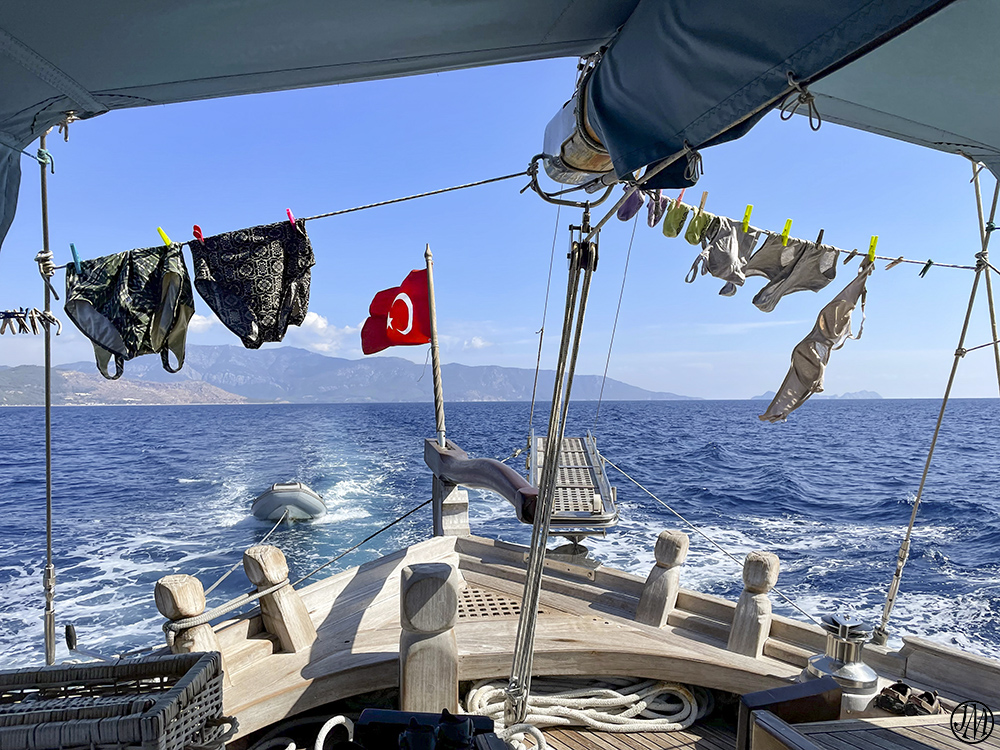
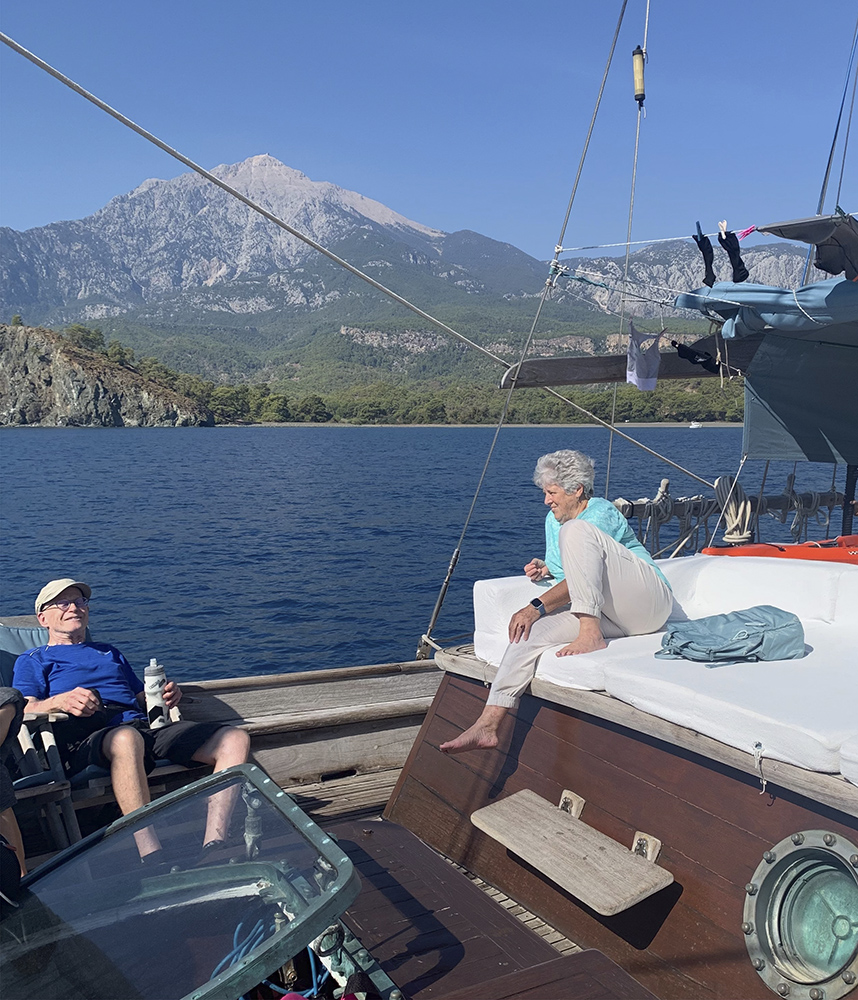
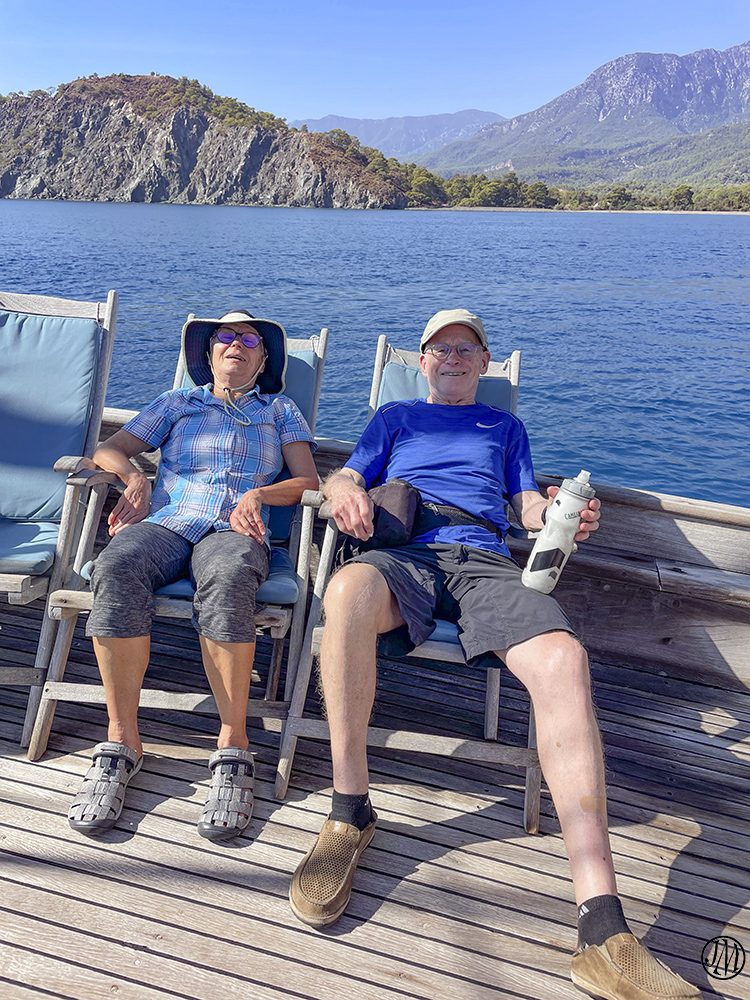
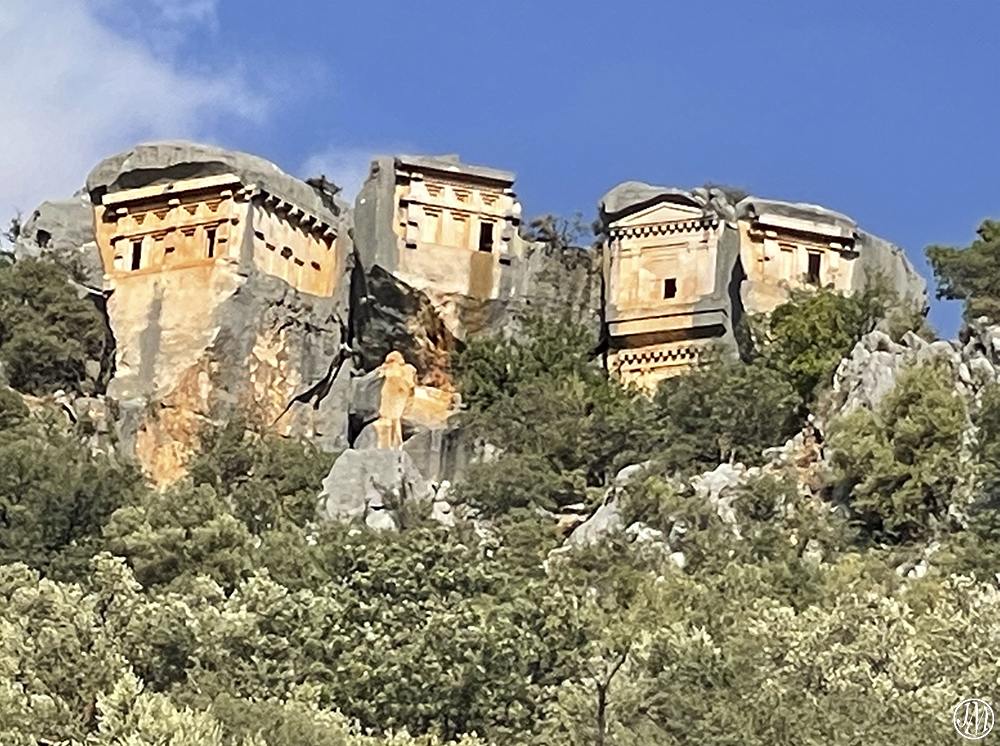
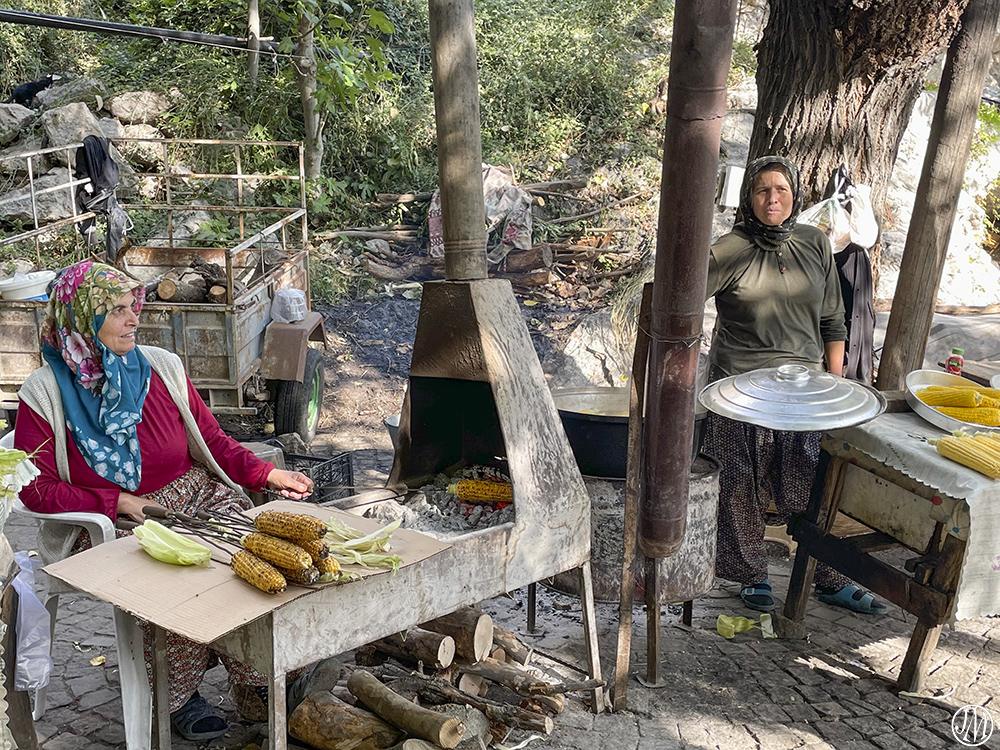
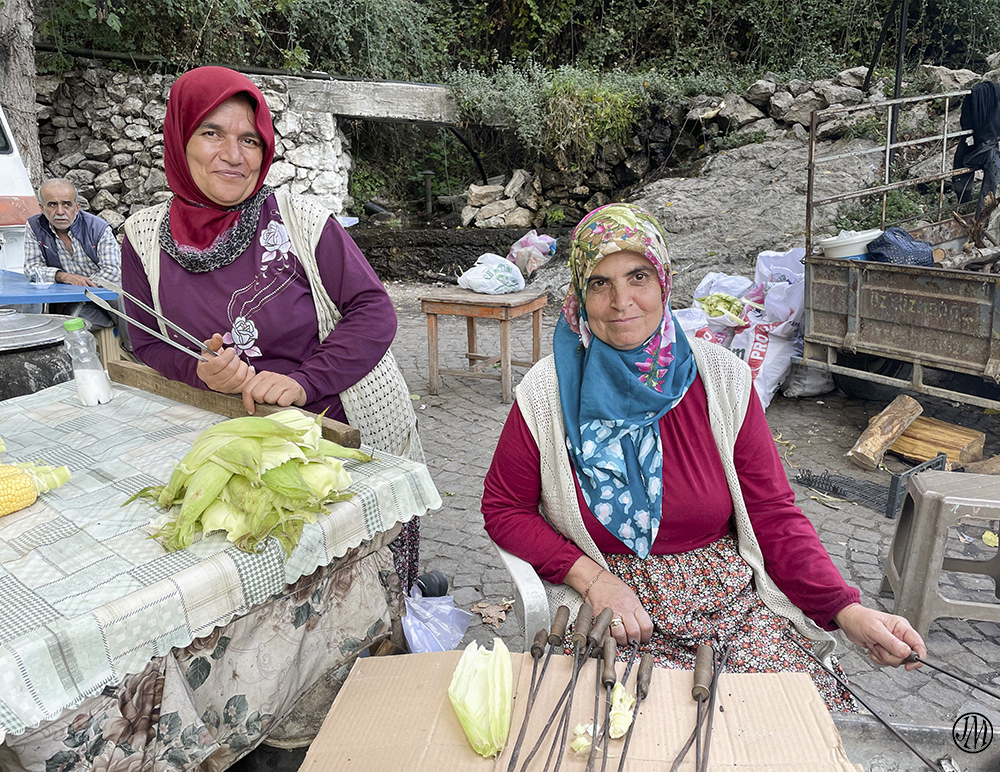
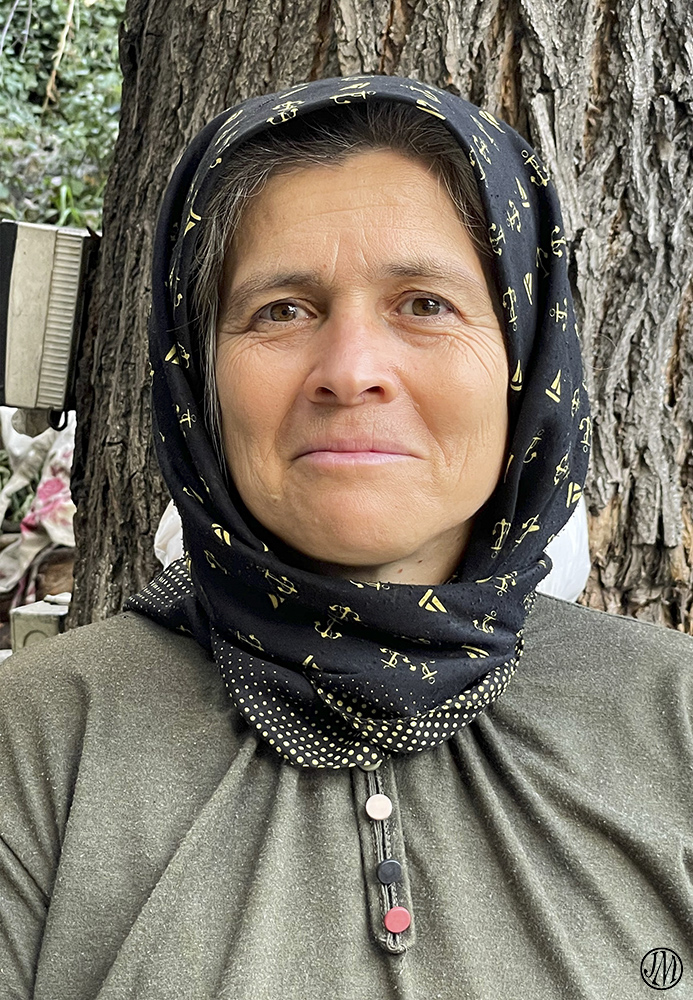
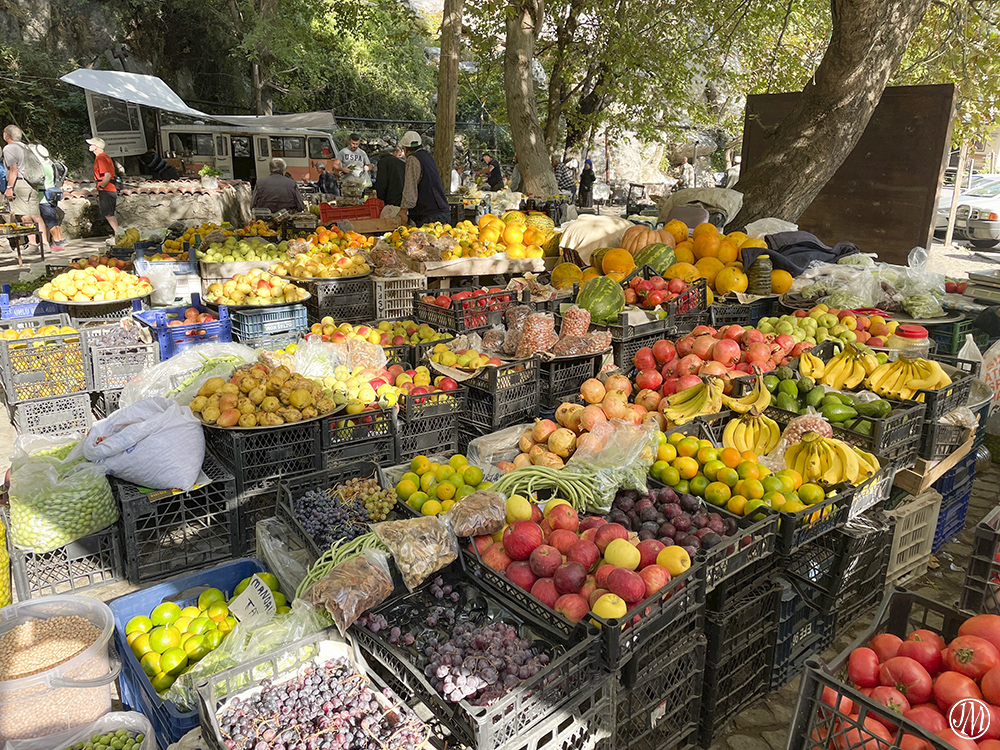
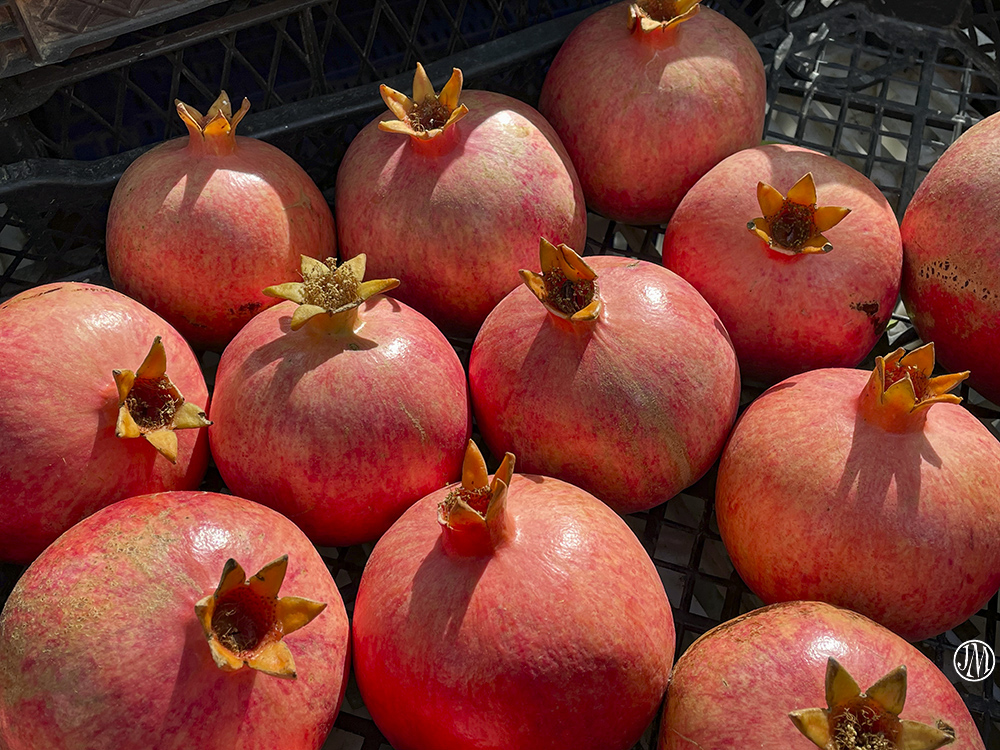
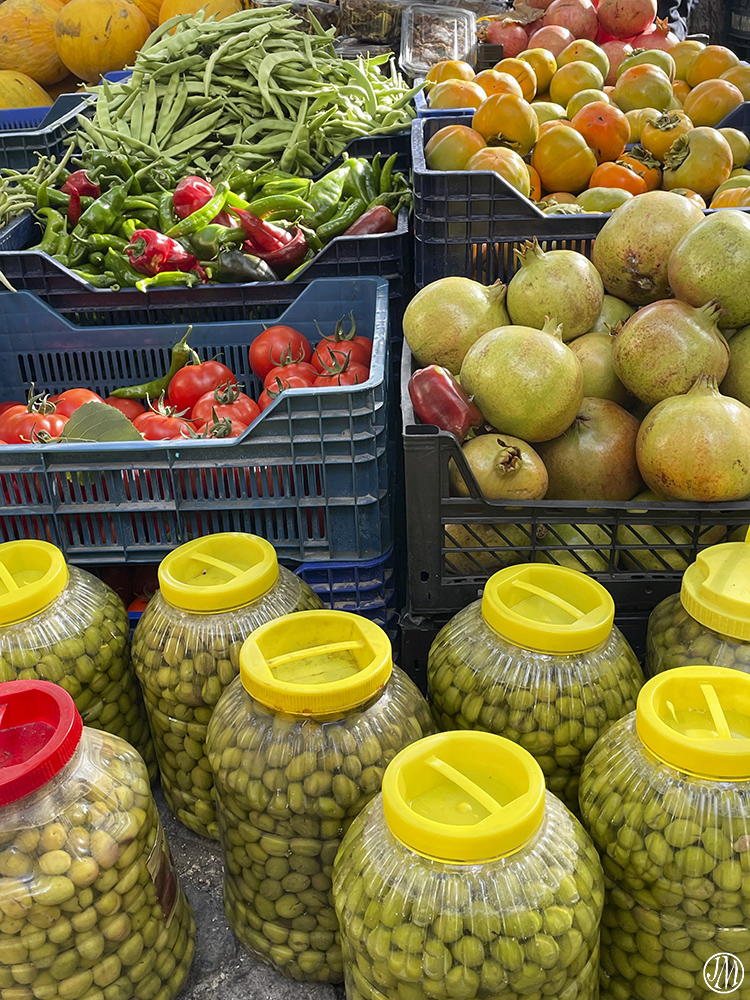
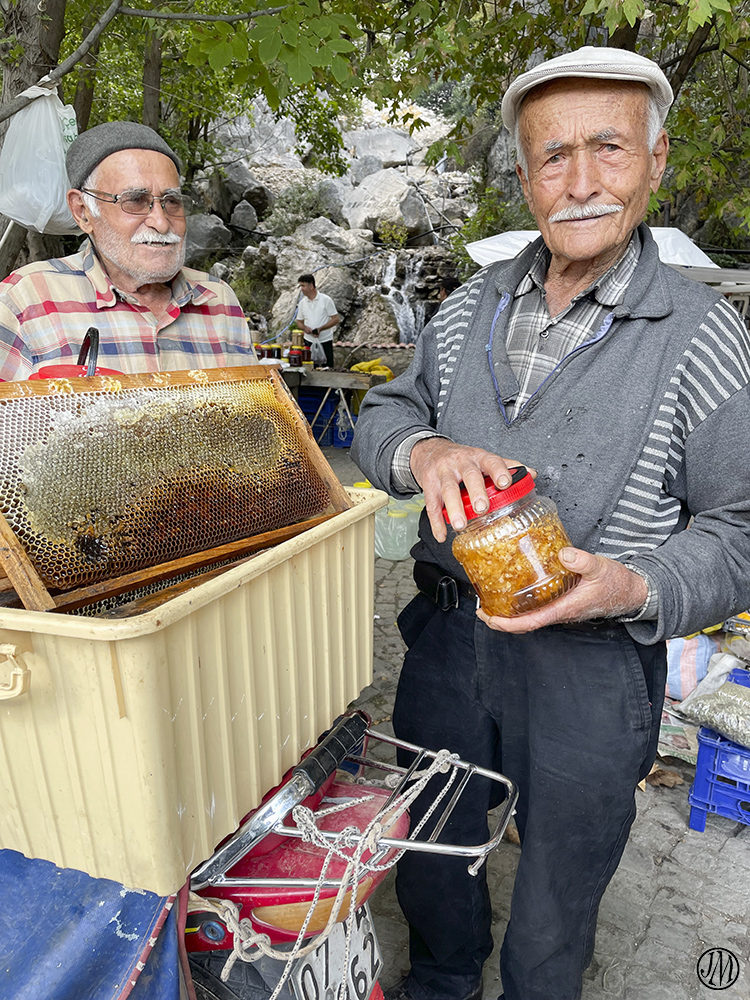
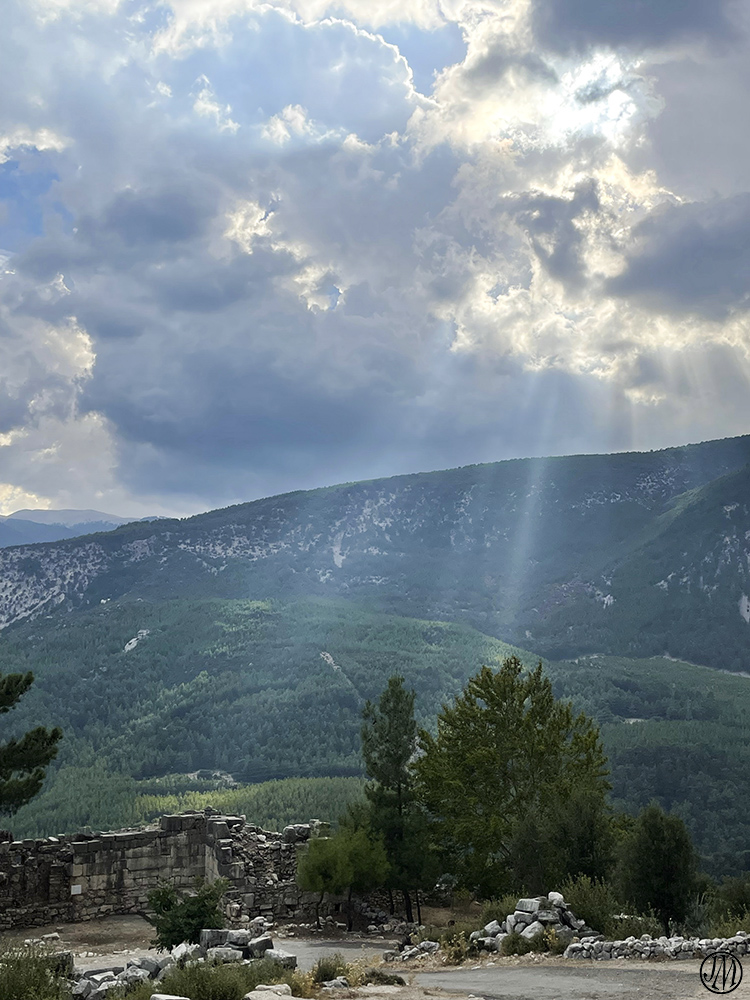
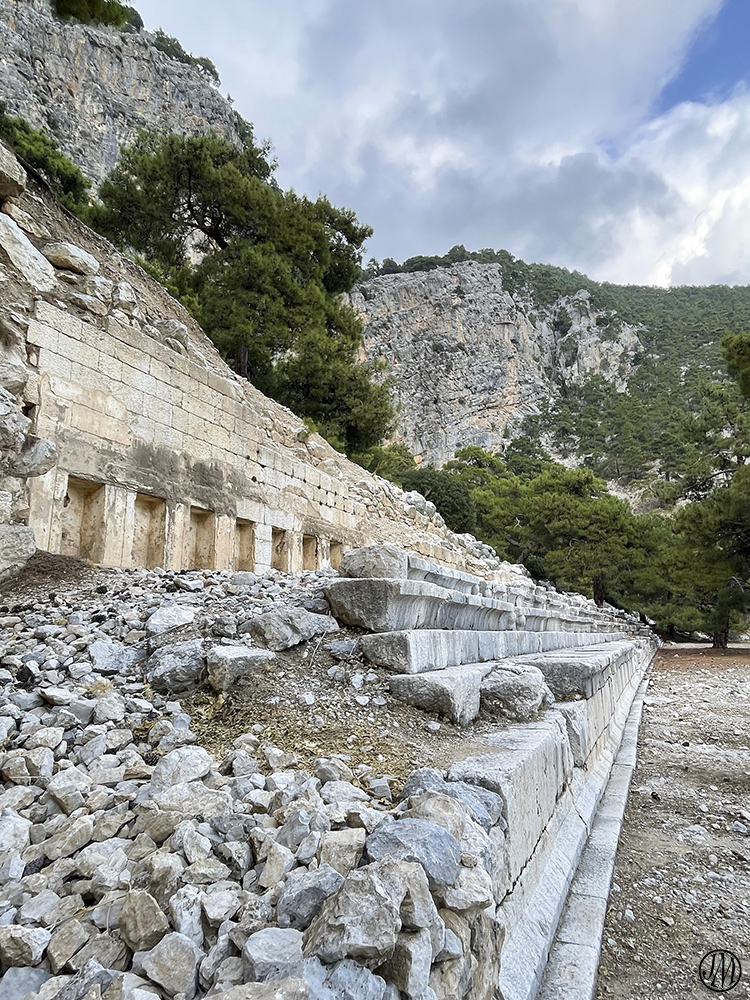
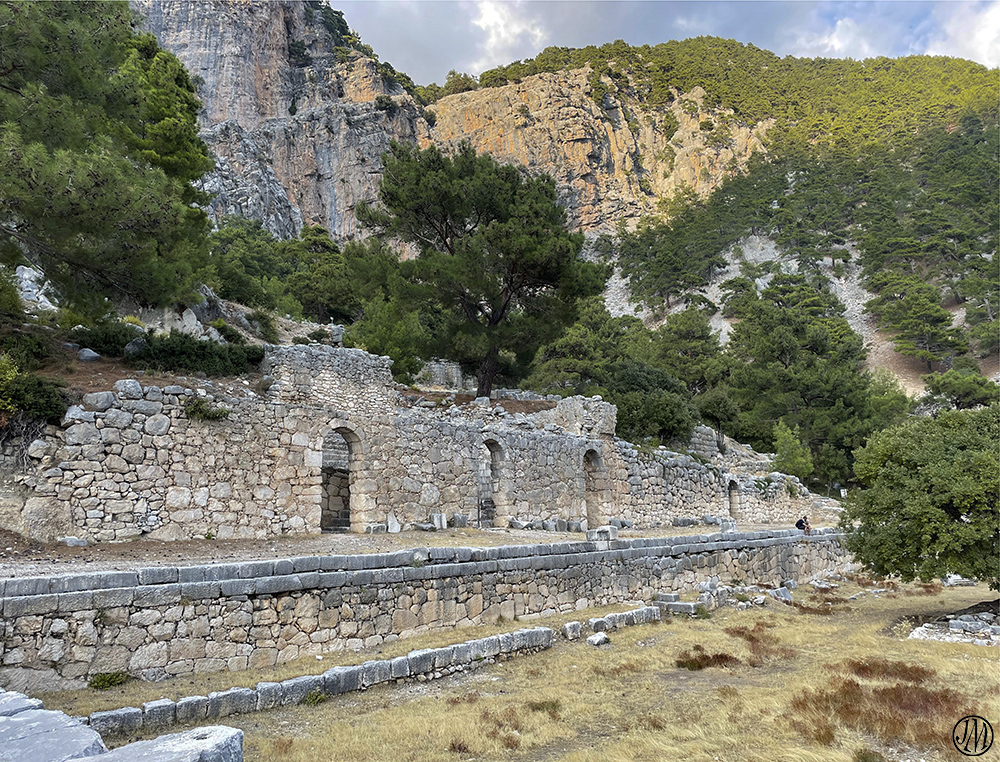
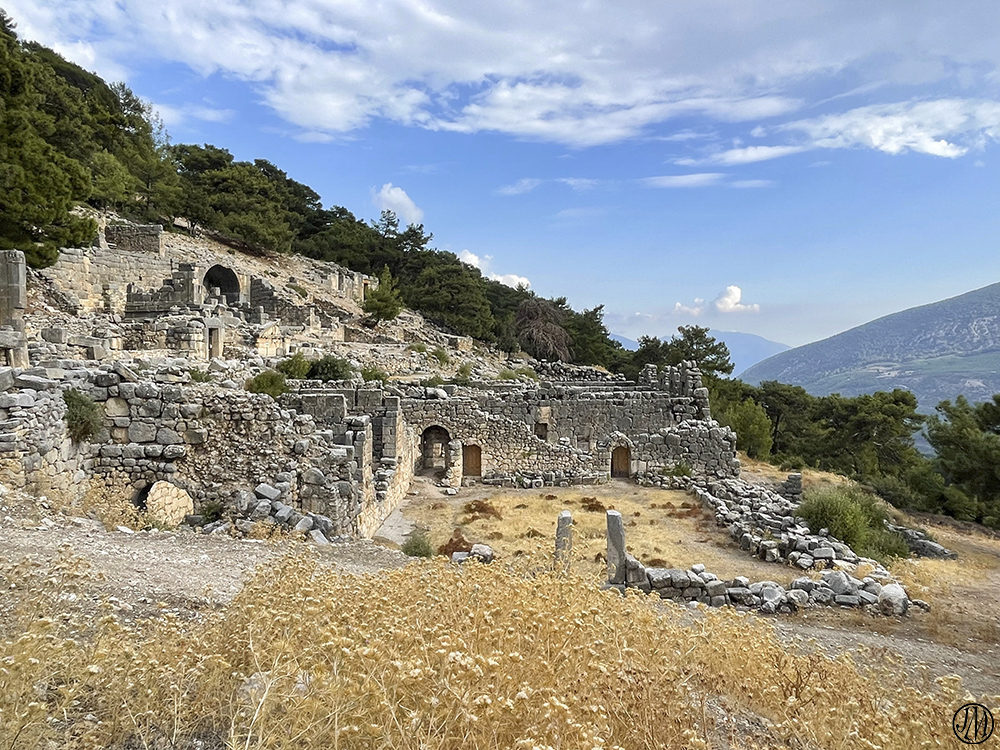
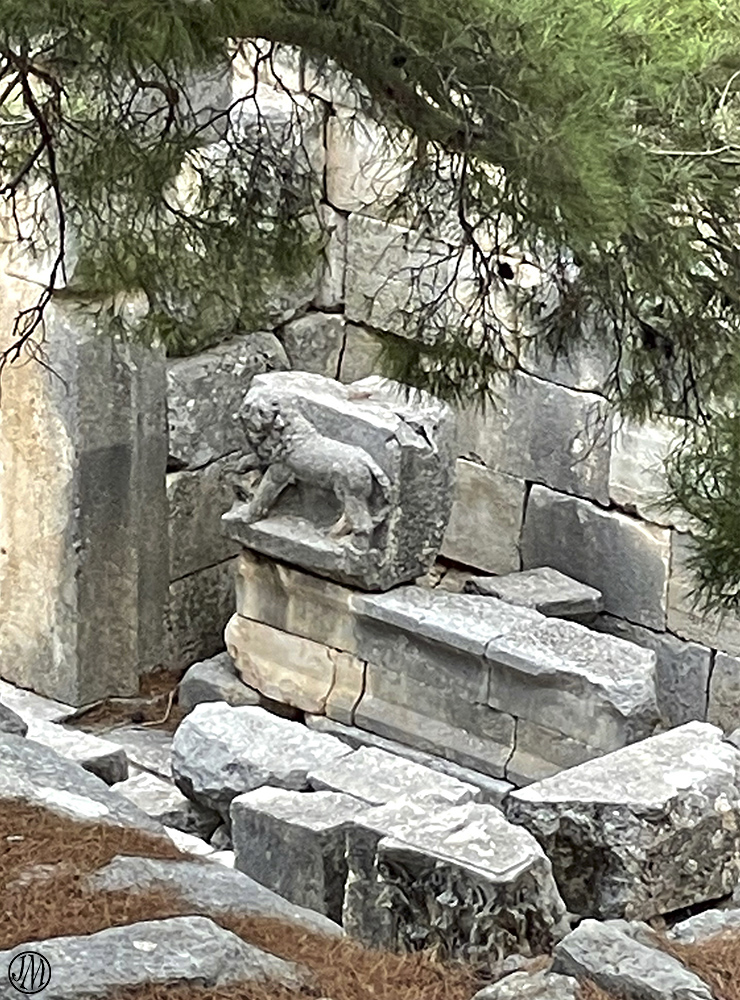
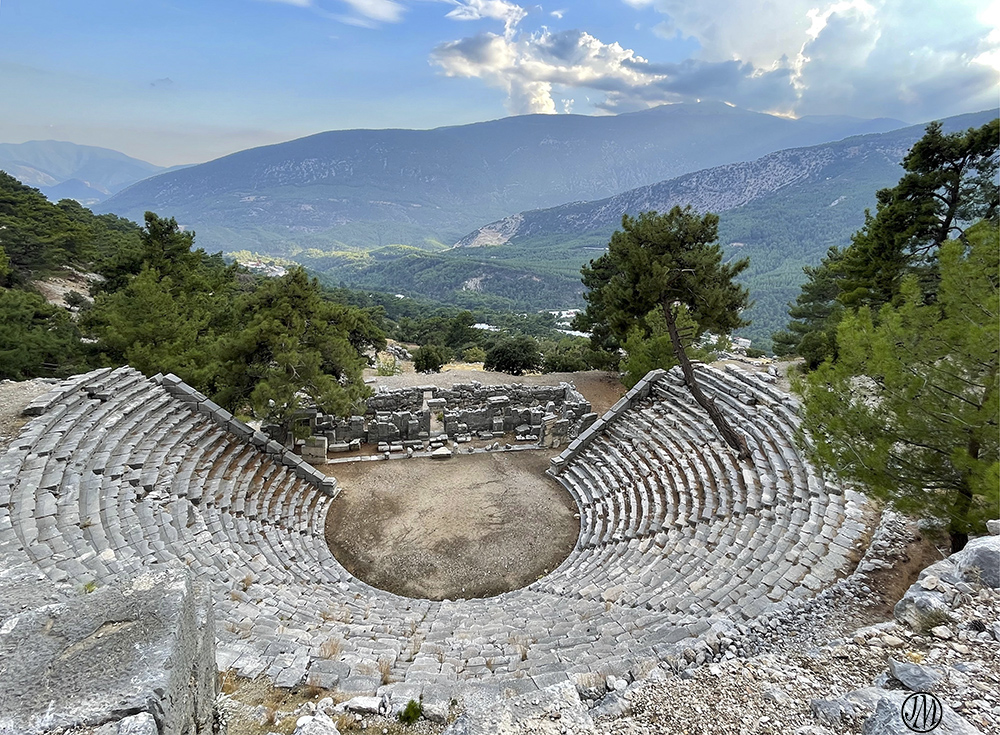
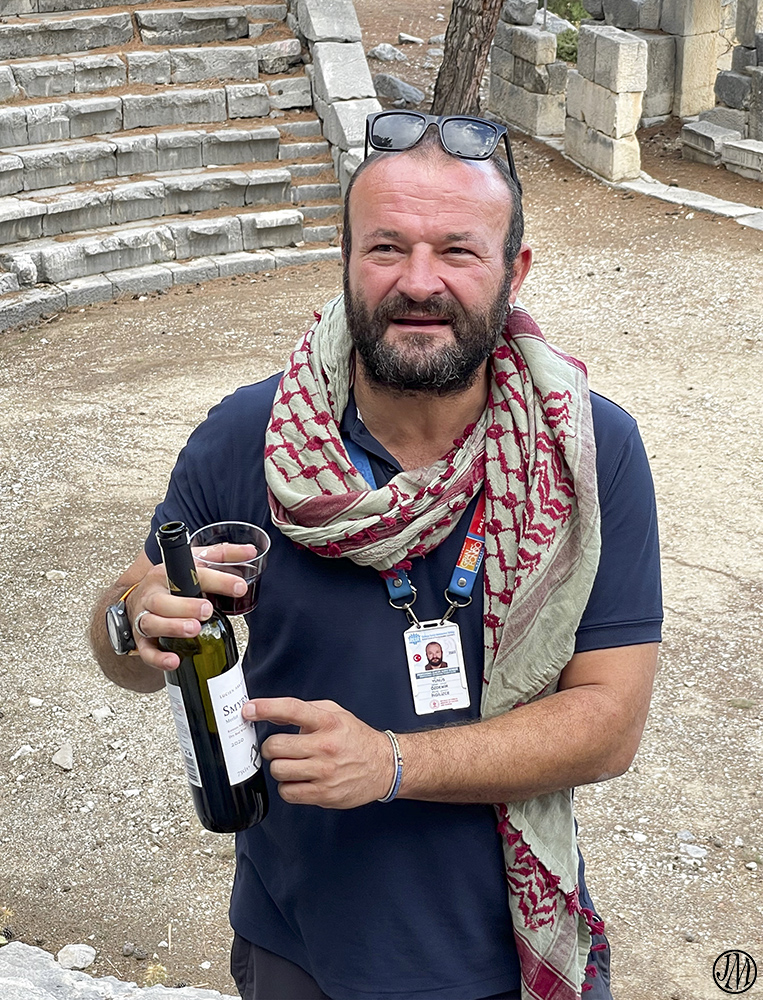
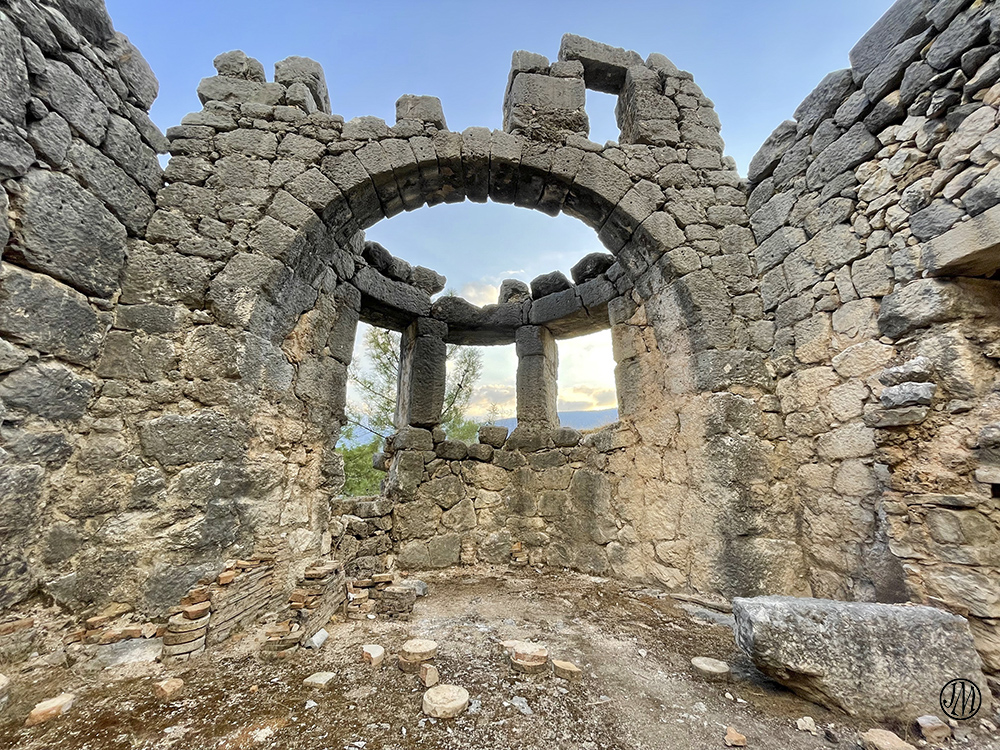
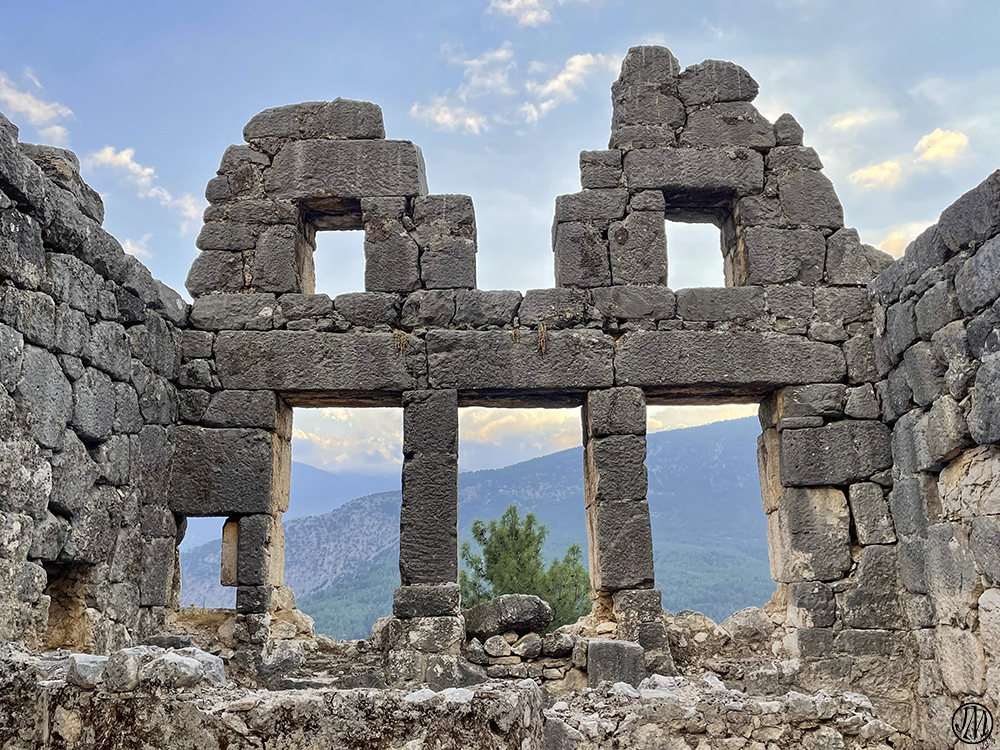
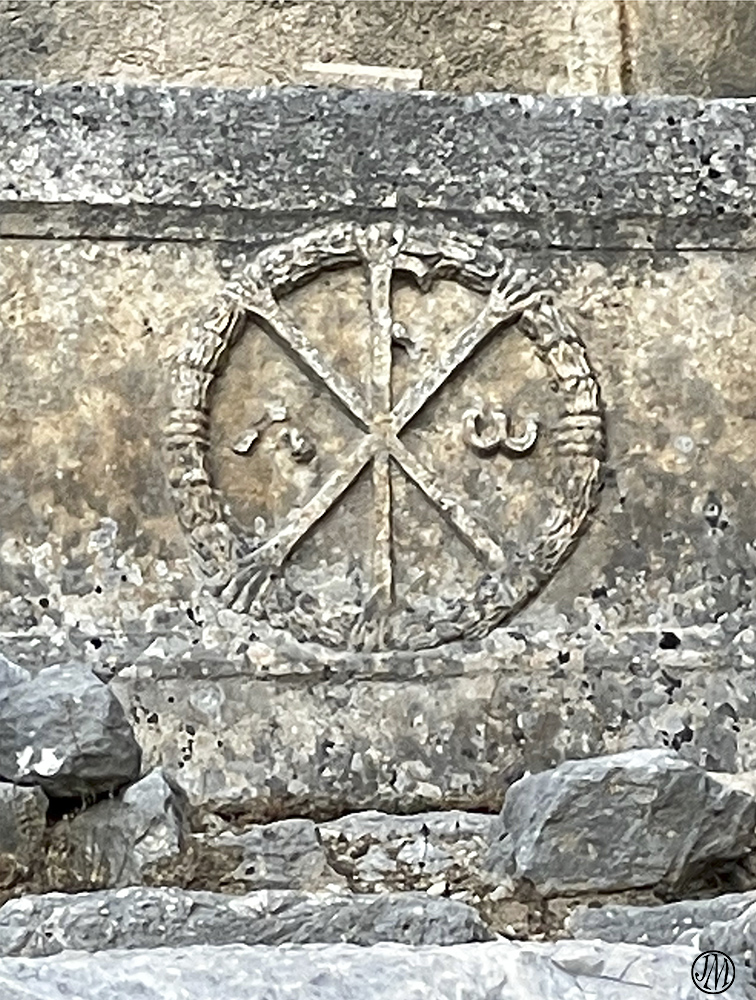
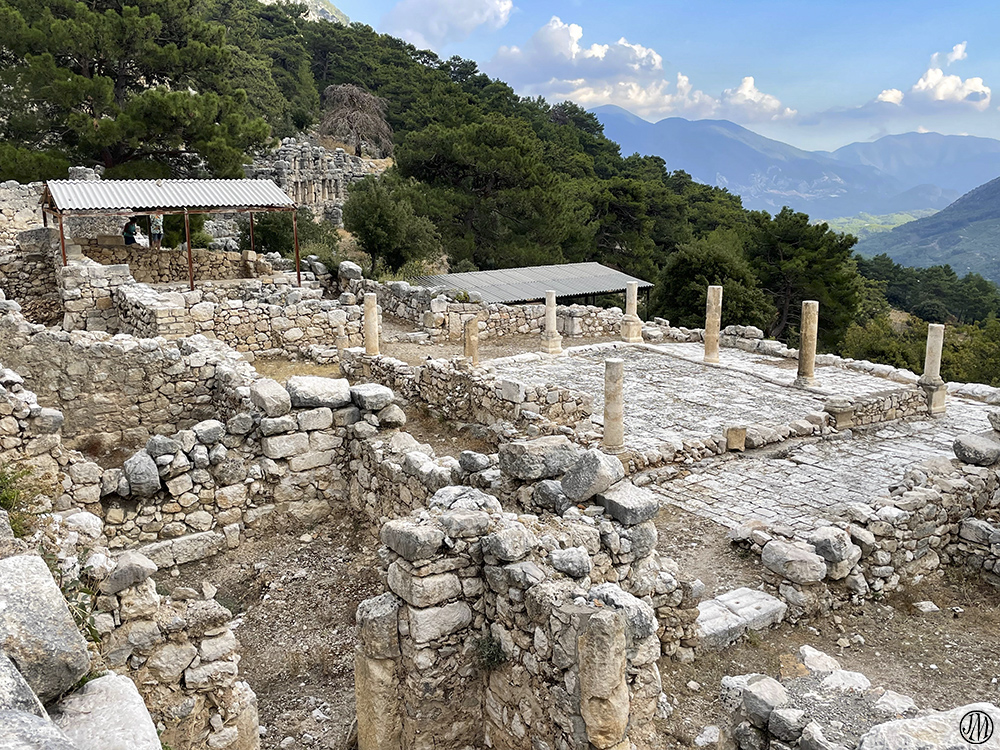
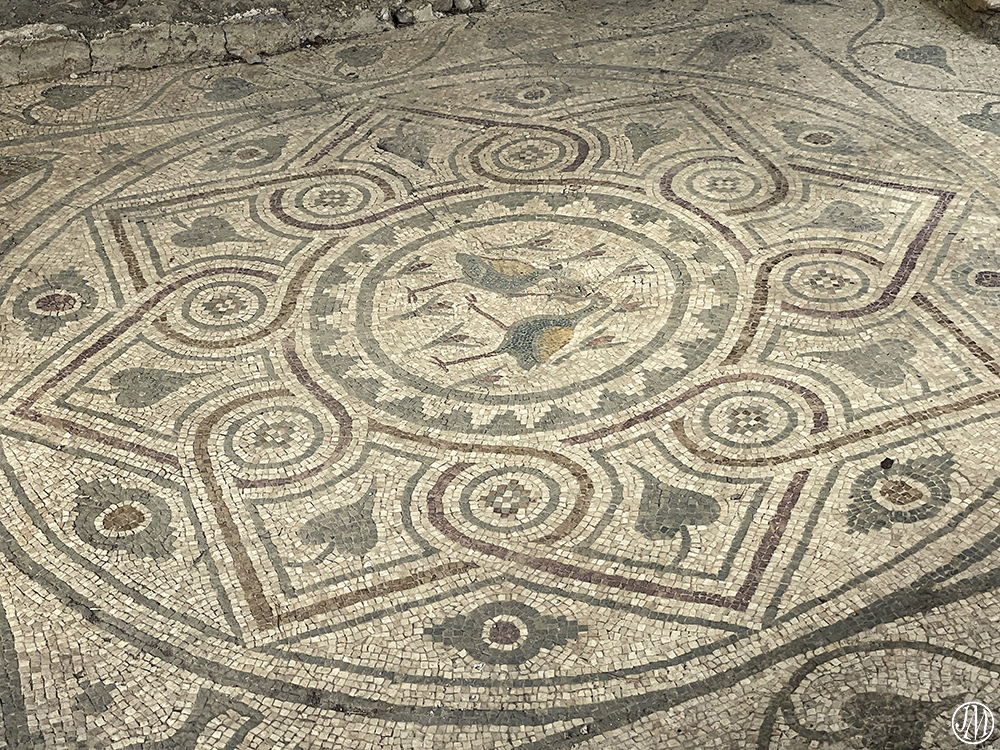
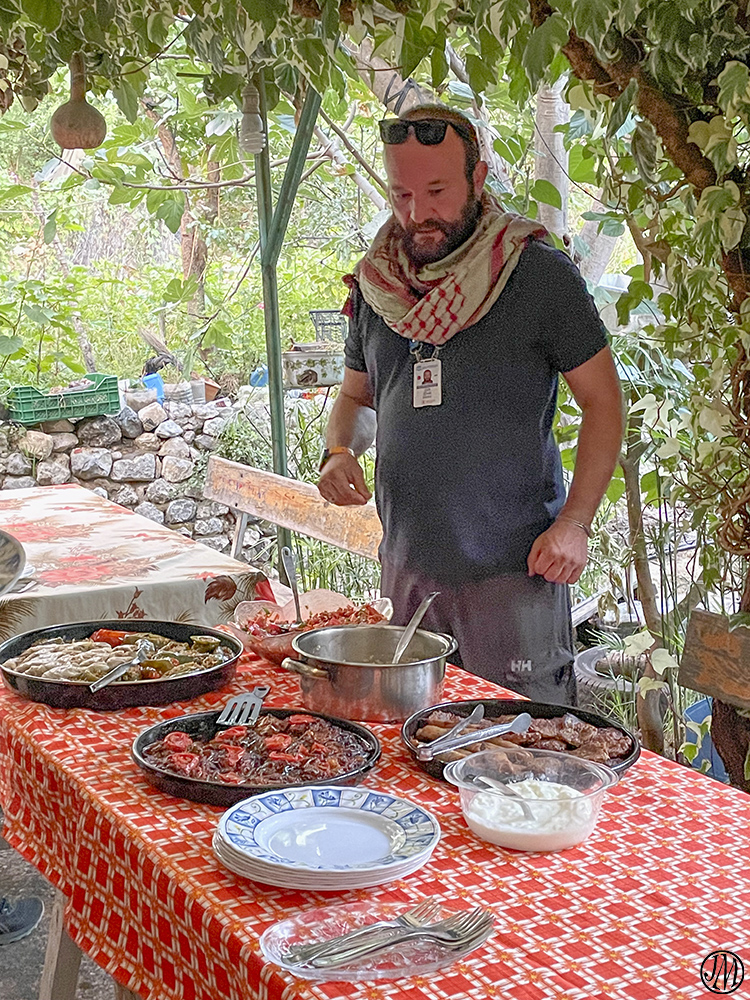
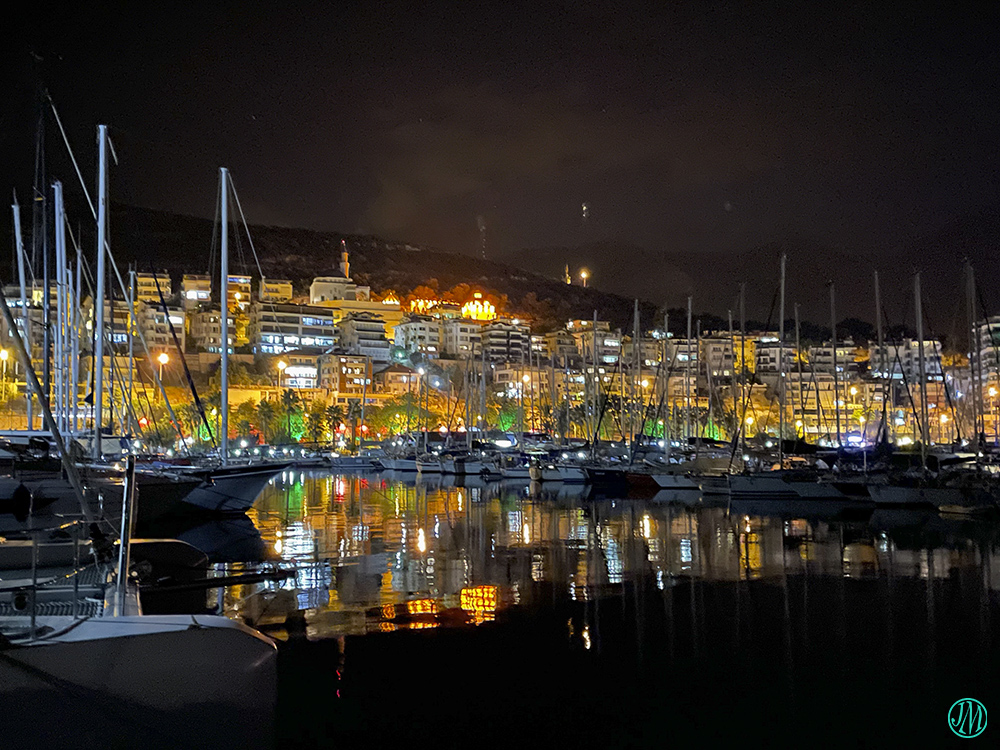

Fabulous Joanna, you captured the trip so well.